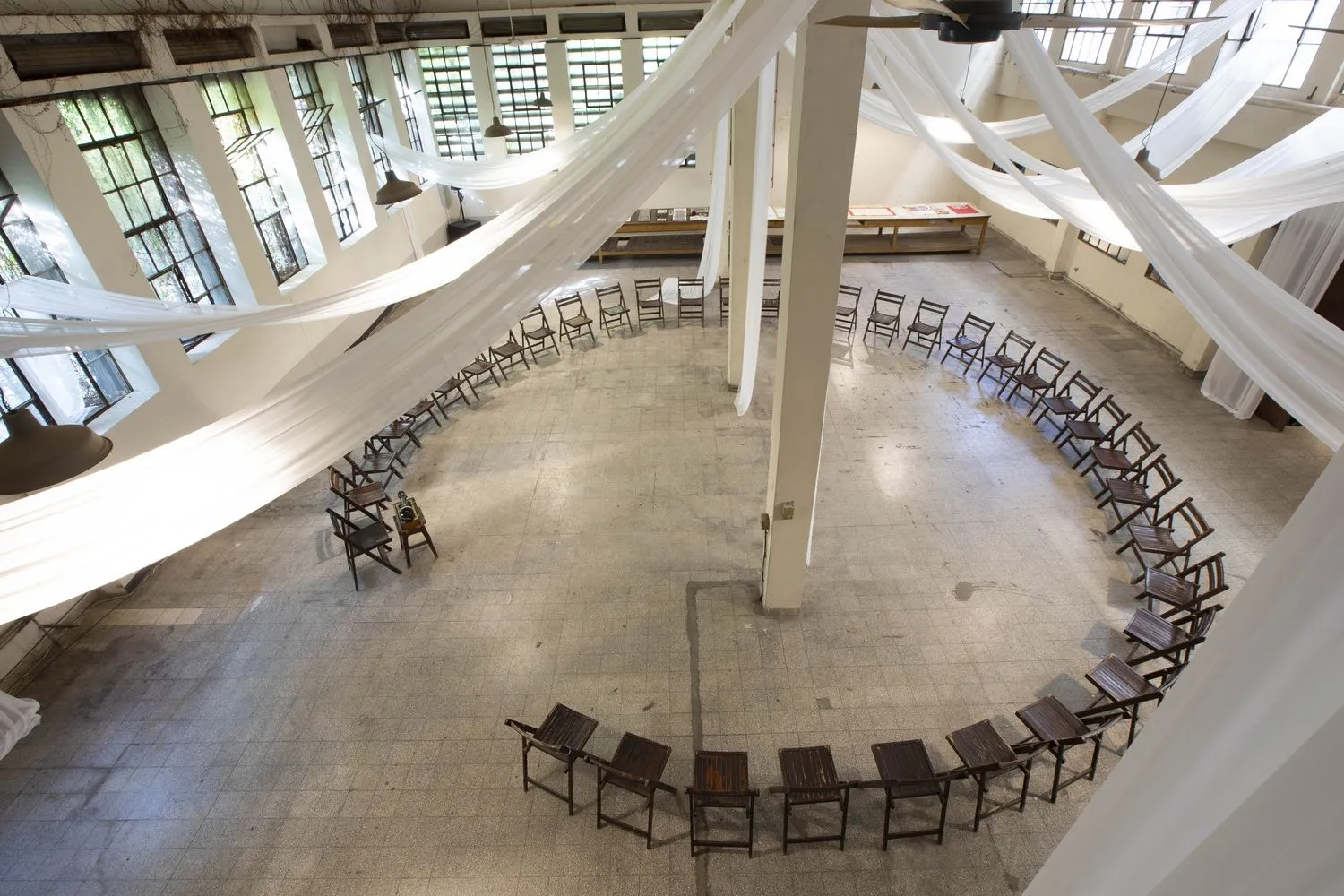 Salim Azzam, An Embroidered Dream at Abroyan Factory by Bernard Khalil
Salim Azzam, An Embroidered Dream at Abroyan Factory by Bernard Khalil Beirut is a city of magic and contradiction, where beauty and hardship coexist, and creation often rises from what has been broken. Its rhythm is one of resilience, where every act of rebuilding is an expression of hope, and every gesture of creativity an act of care. We Design Beirut emerged from that same pulse: from the energy of a city that continues to create both despite and because of all it has endured.
Guided by the vision of founder Mariana Wehbe and creative director Samer Alameen, it unfolded not merely as a design event but as a collective gesture of care, persistence, and imagination, a testament to Beirut's enduring creative force. The second edition reaffirmed what the first had already made clear: here, design is more than aesthetics; it is a living practice that connects communities, repairs fragile networks, and sustains cultural continuity.
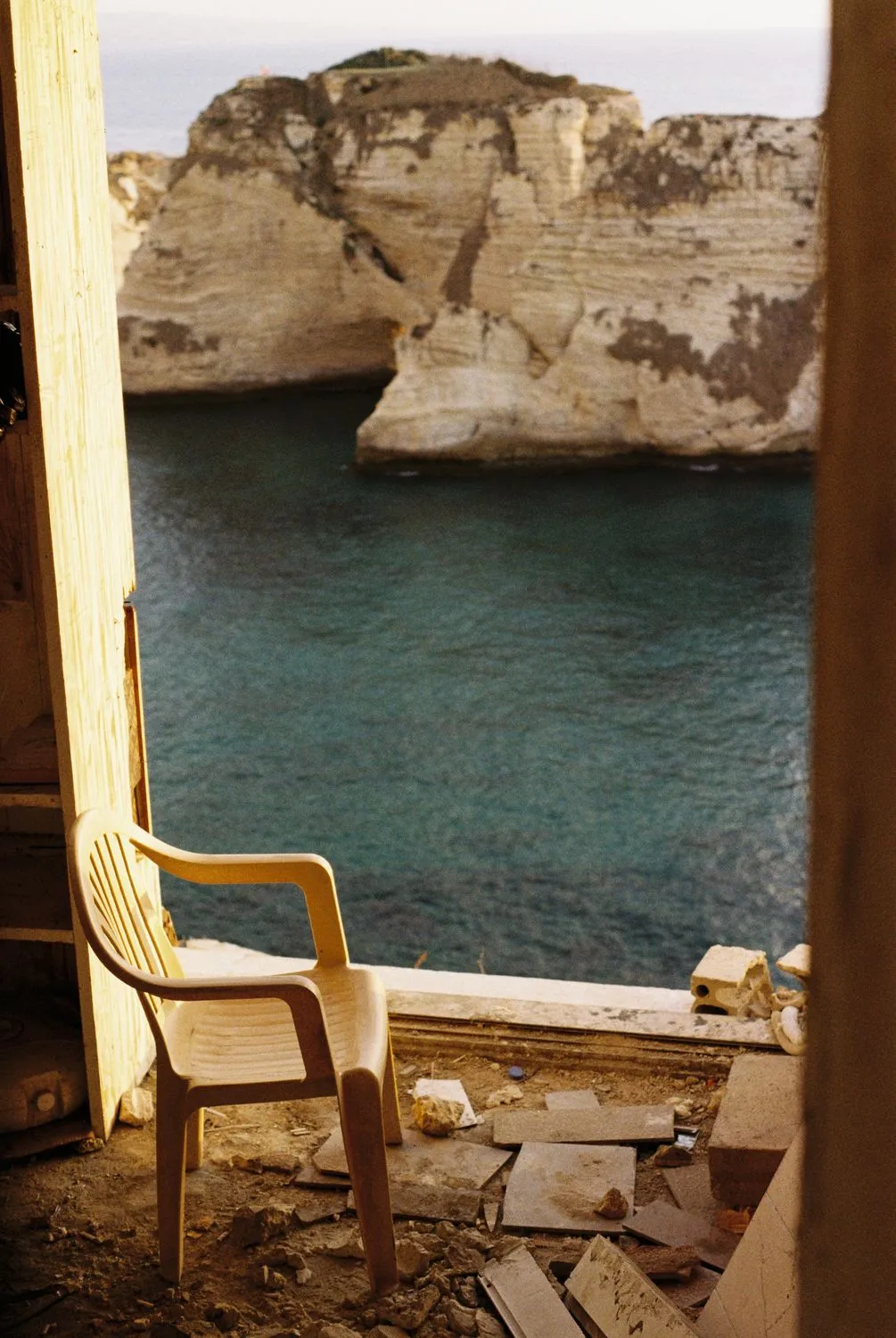
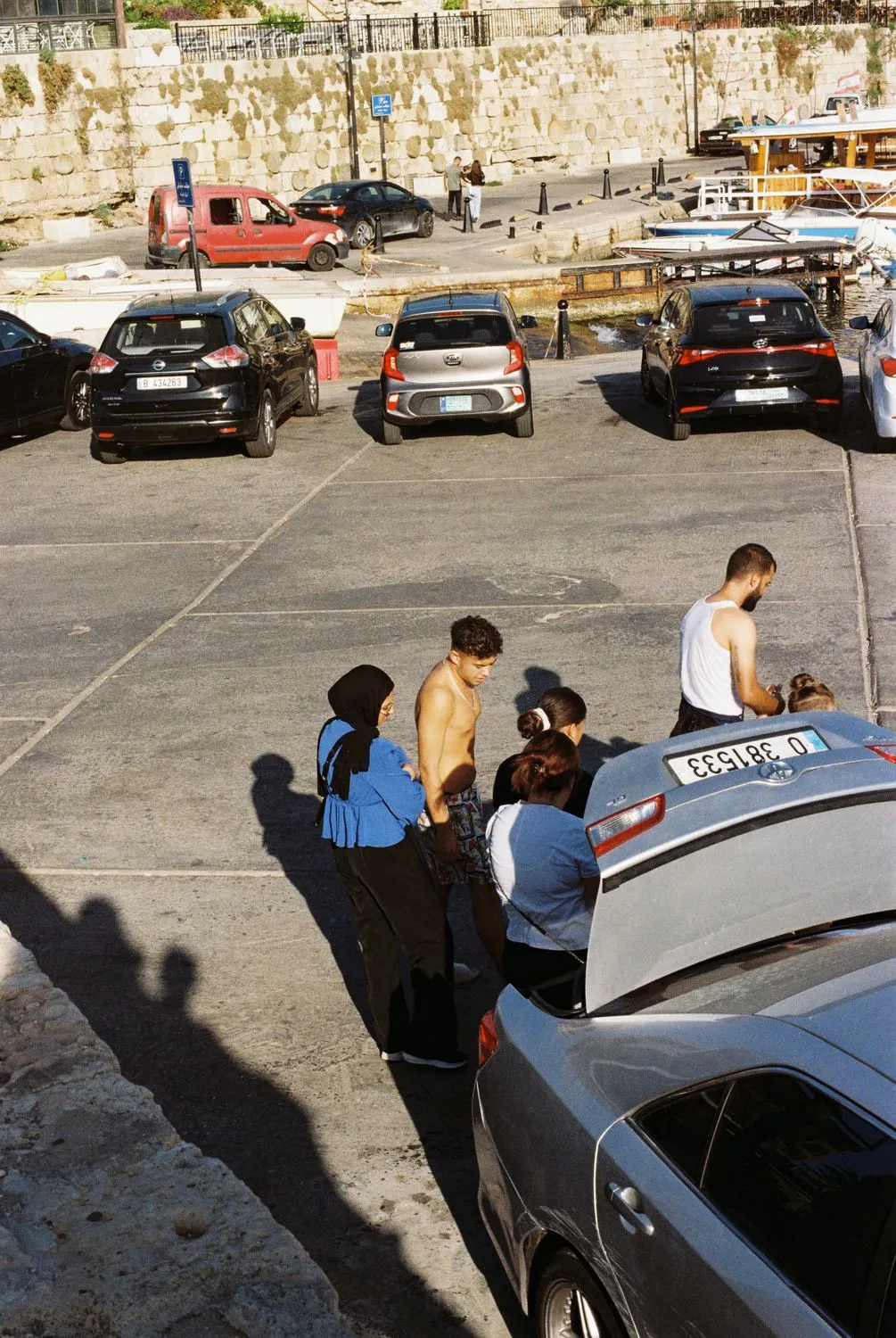
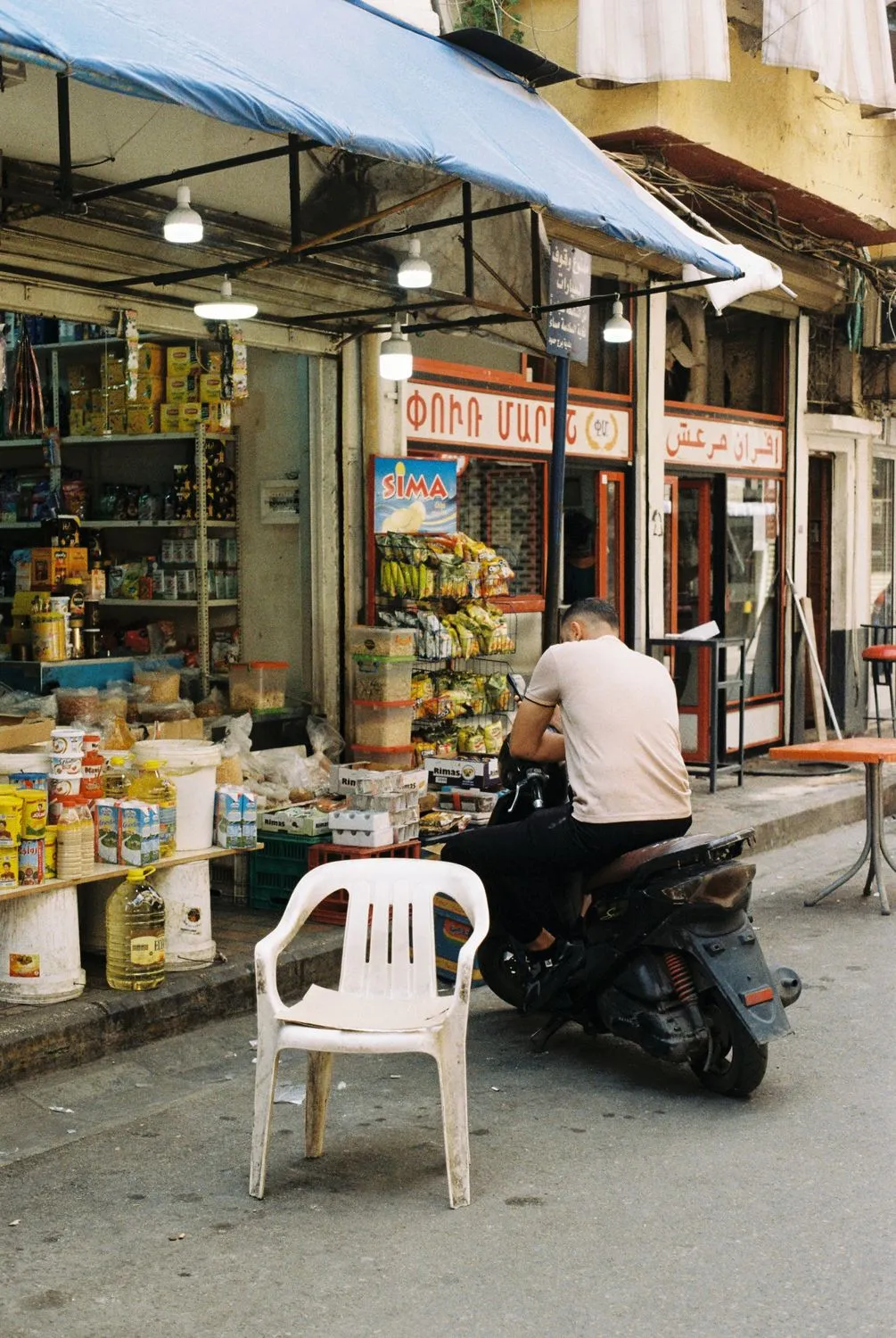
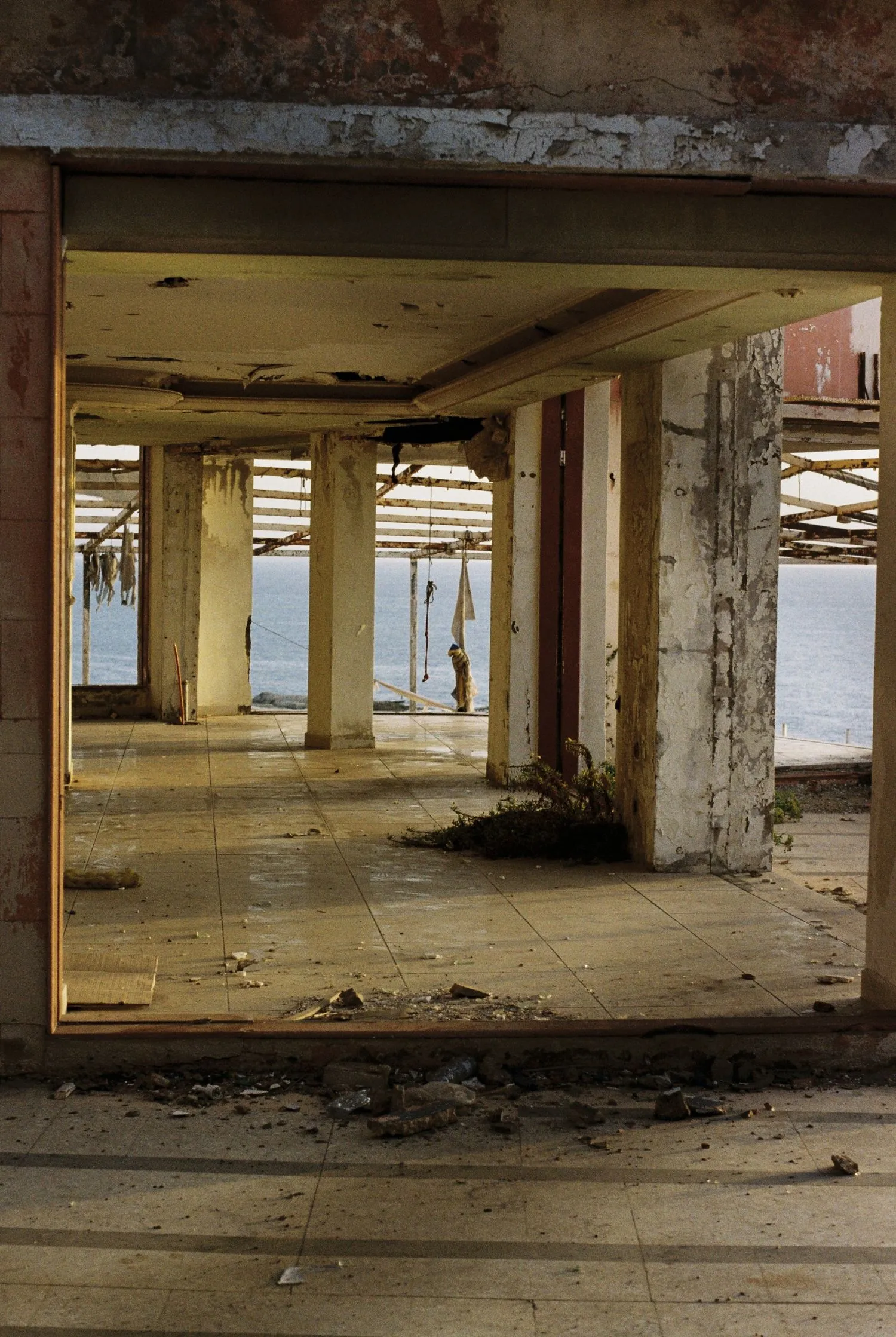
Envisioned to revive the city — economically, emotionally, and socially — We Design Beirut breaks the mold of global design weeks by grounding itself in meaning and purpose rather than prestige. Channeling hope into action, it seeks to democratize culture and foster inclusion, reminding us that real change begins with access and belonging.
This edition consciously confronted the city's history of war and violence, marking the 50th anniversary of the start of the Civil War. Engaging with the lingering effects of conflict — trauma, economic stagnation, and the erosion of the city's infrastructure — the event created spaces for reflection, creativity, and renewal.
Building on the foundation of its inaugural edition, this year's We Design Beirut expanded to five venues hosting eight exhibitions, installations, open studios, panel talks and workshops, while staying true to its core principles of preserving the past, empowering the present, and sustaining the future. Each site — Abroyan Factory, Burj El Murr, Immeuble de l'Union, Roman Baths and Villa Audi — carries its own story, offering a glimpse into the city's layered history.

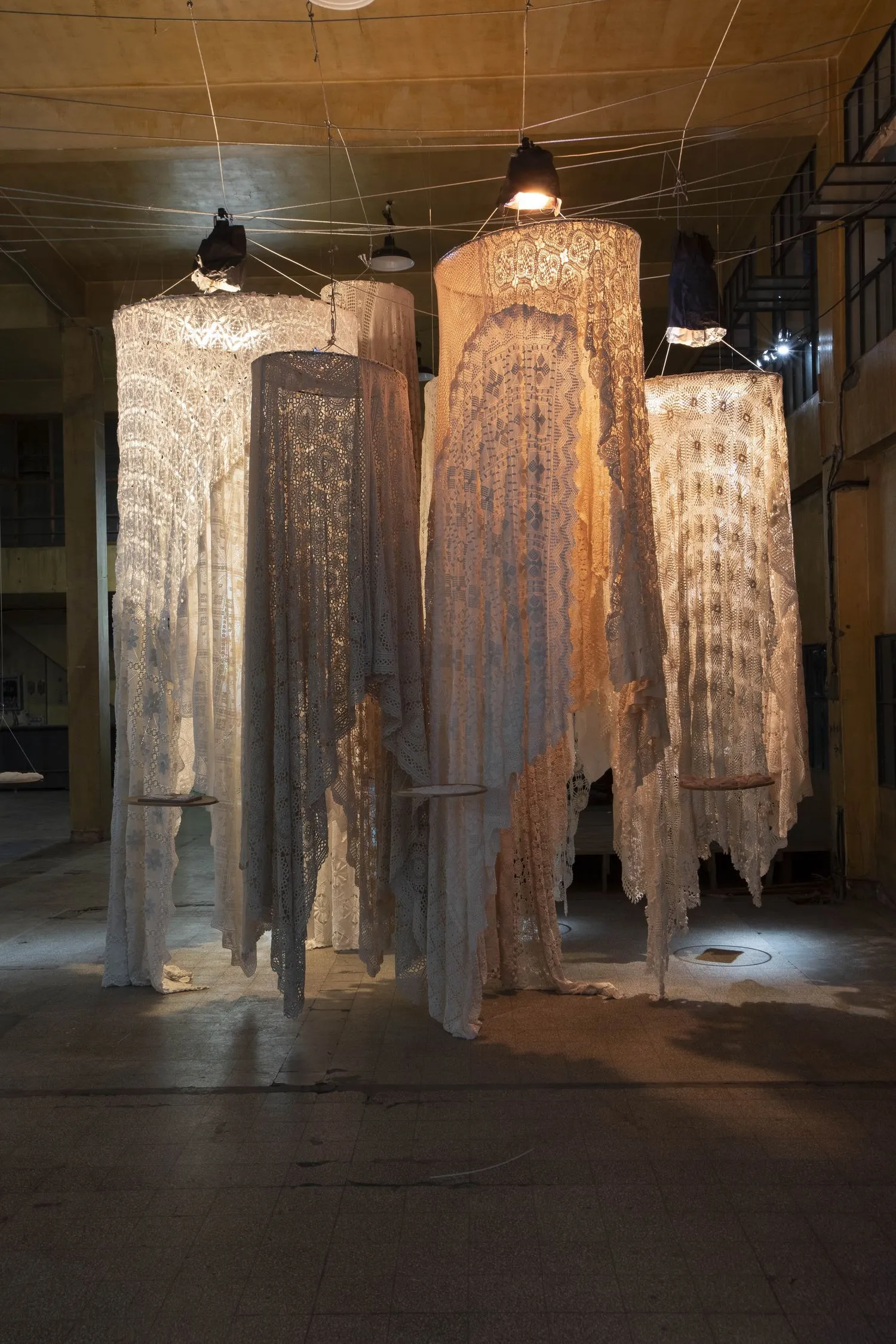
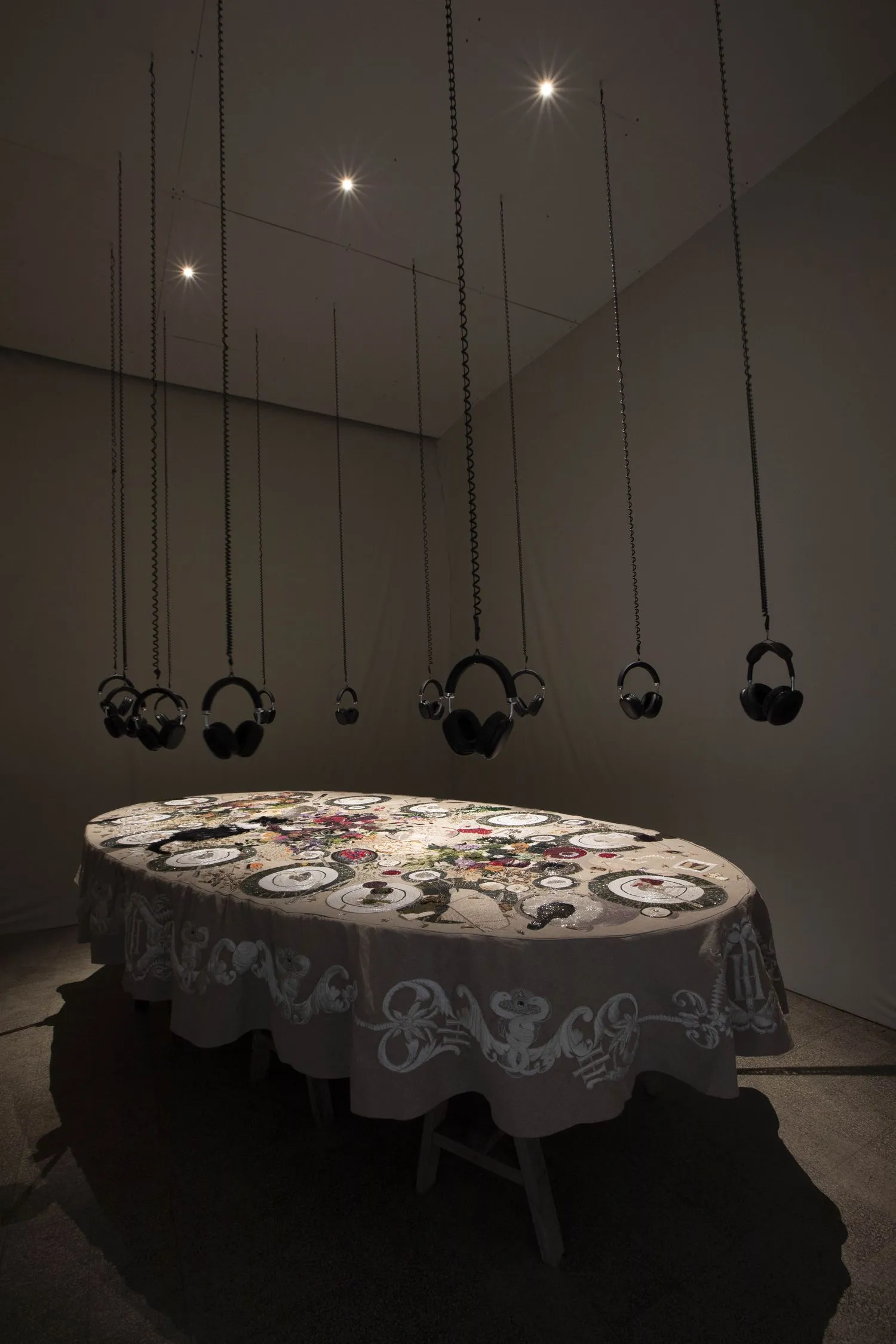
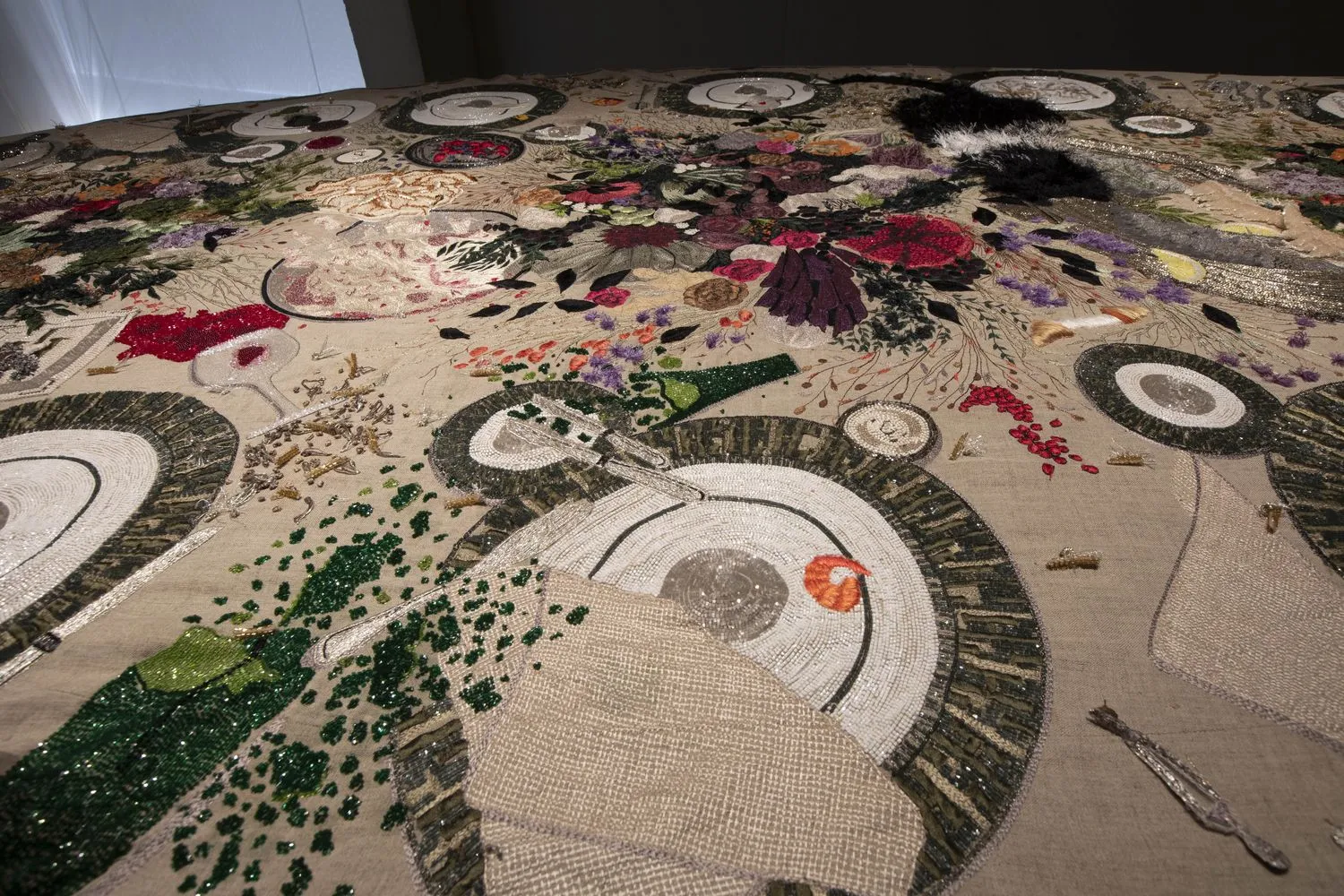
This edition rightfully placed Lebanese craft at the forefront, as a living testament to the country's creativity and resilience, reflecting a rich interplay of skill, material, and storytelling. Rooted in centuries of tradition, these practices carry knowledge from past generations while constantly evolving through innovation.
At the Abroyan Factory, this heritage took on a deeply emotional form. Reactivated as the Craft Hub through the curatorial vision of Samer Alameen, the 14,000-square-meter space invited artisans to reclaim a site once central to Beirut's textile industry and transform it into a place of collaboration and experimentation. Spanning textile, rattan and glasswork, clay, and marquetry, exhibitions Métiers d’Art and Threads of Life highlighted the ingenuity and resilience of Lebanon's makers.


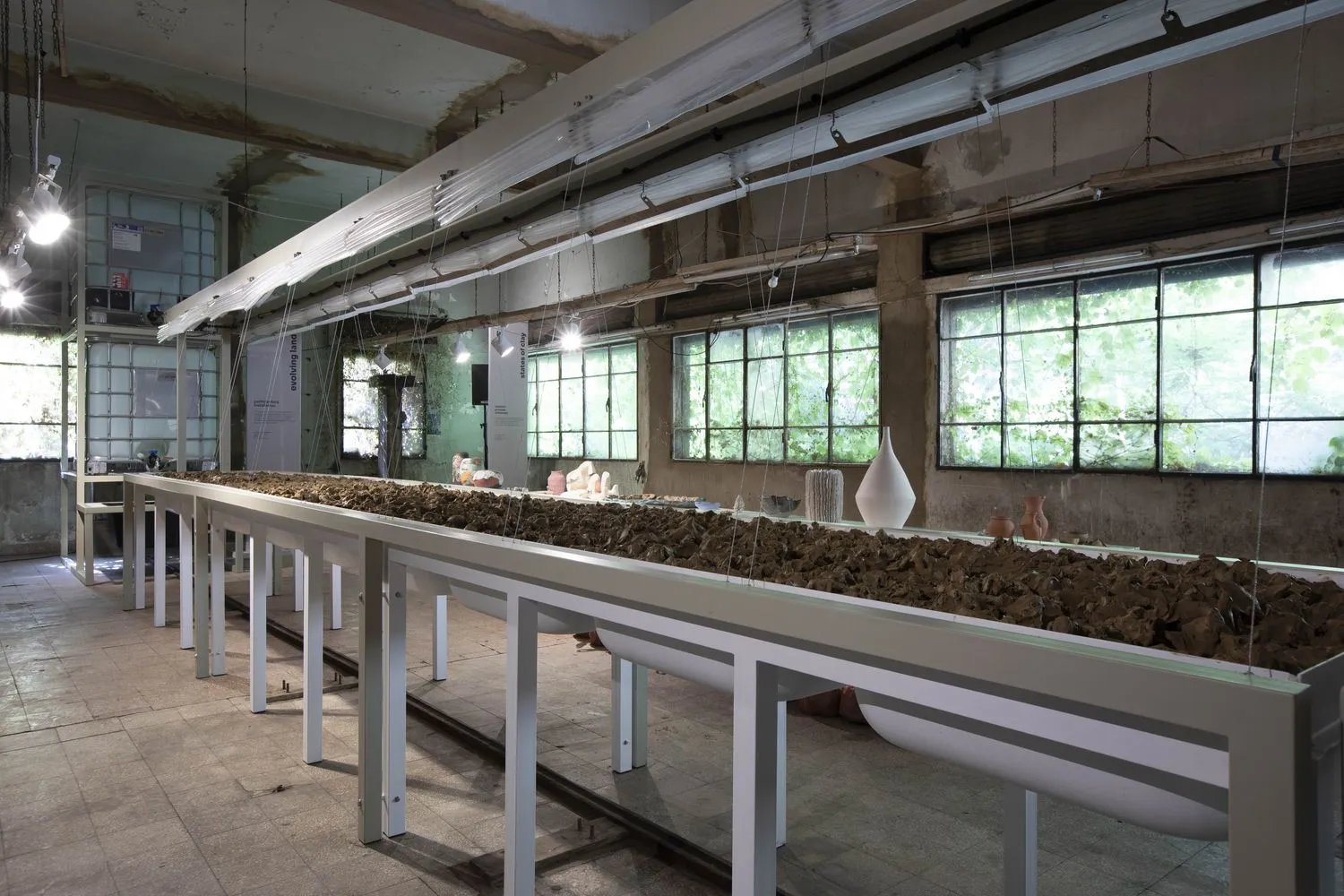
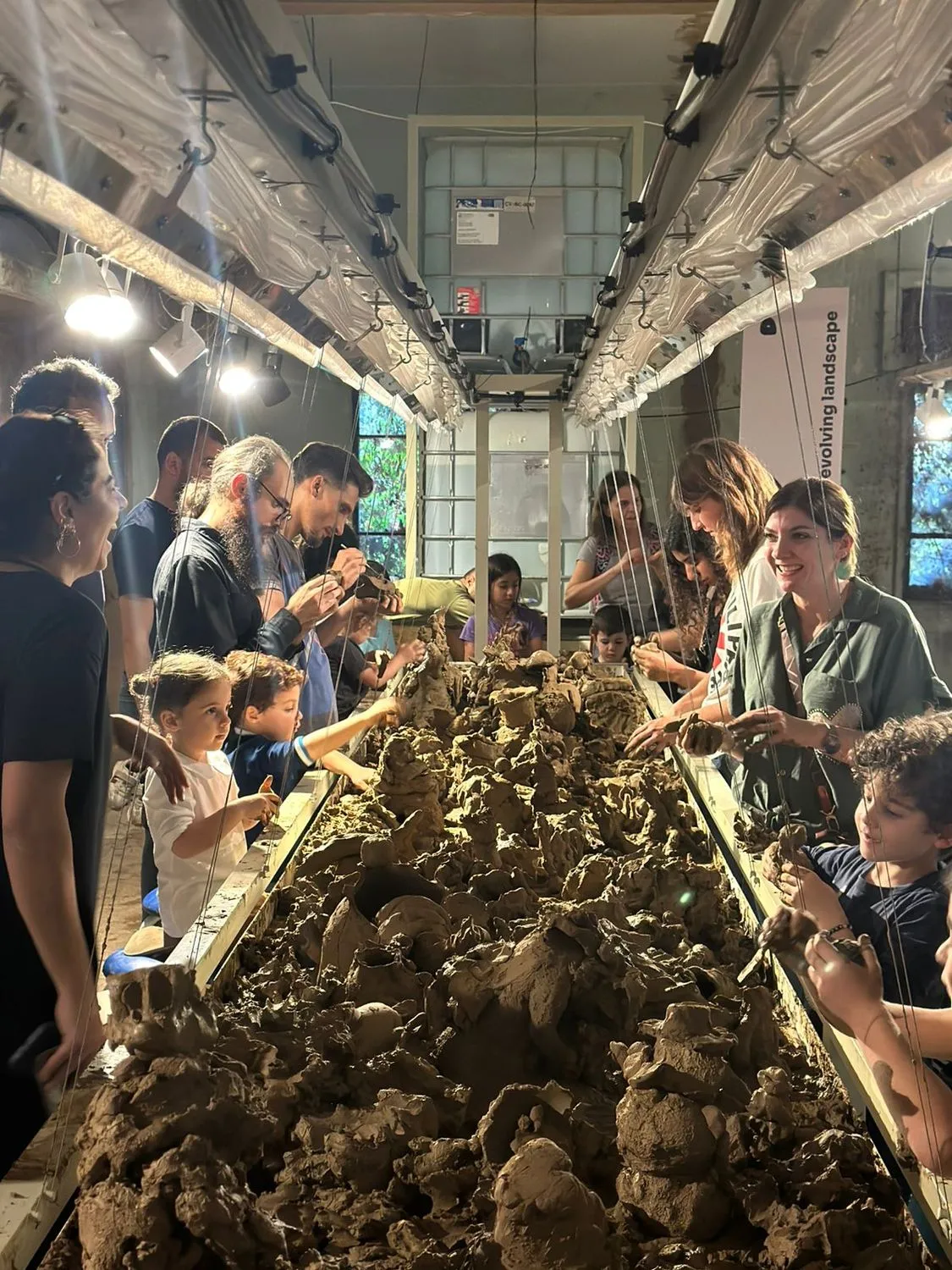
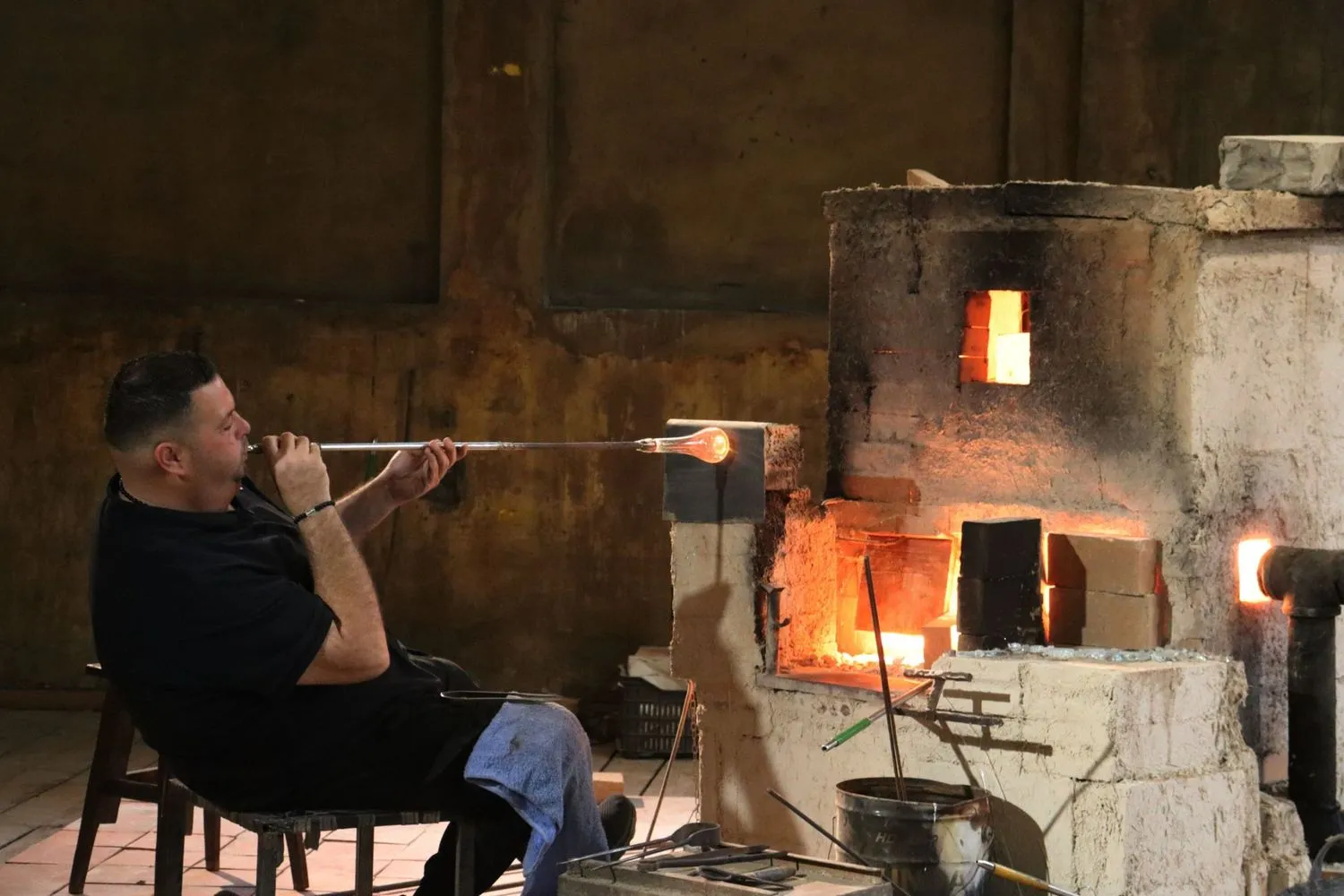
Rather than presenting only finished works, the showcase invited visitors into the creative process itself. Audiences were immersed in every stage of making — from live glass-blowing demonstrations in an exhibition curated by Tessa Sakhi and coordinated by Nasrine Khalife, to Studio Nada Debs’s marquetry wall crafted from reclaimed wood alongside artisan Nabil Haswani, one of Lebanon's last marquetry masters.
On the upper floor, Fabrica Design Platform transformed clay into a living laboratory, inviting visitors to touch, mold, and question material through interactive installations, workshops, and its Material Alchemy Lab. Local clay and reclaimed bisque objects were tested, manipulated, and fired, revealing the alchemy of glaze, texture, and form.
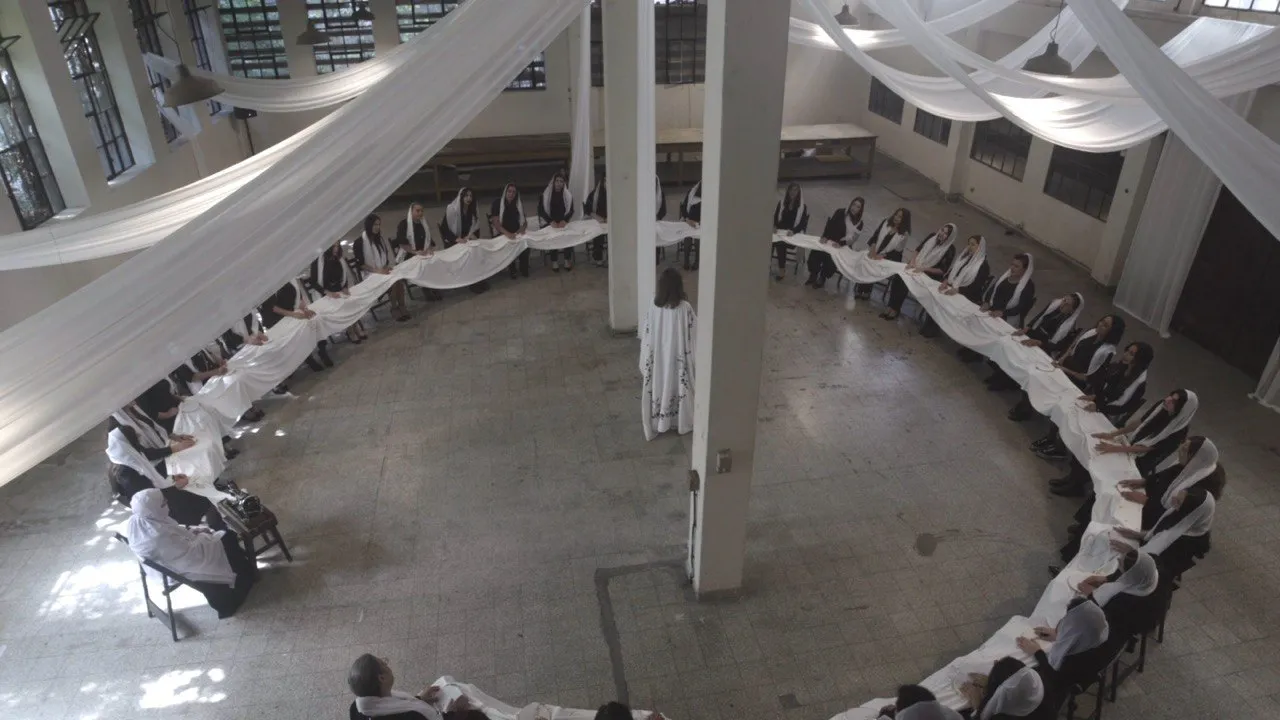
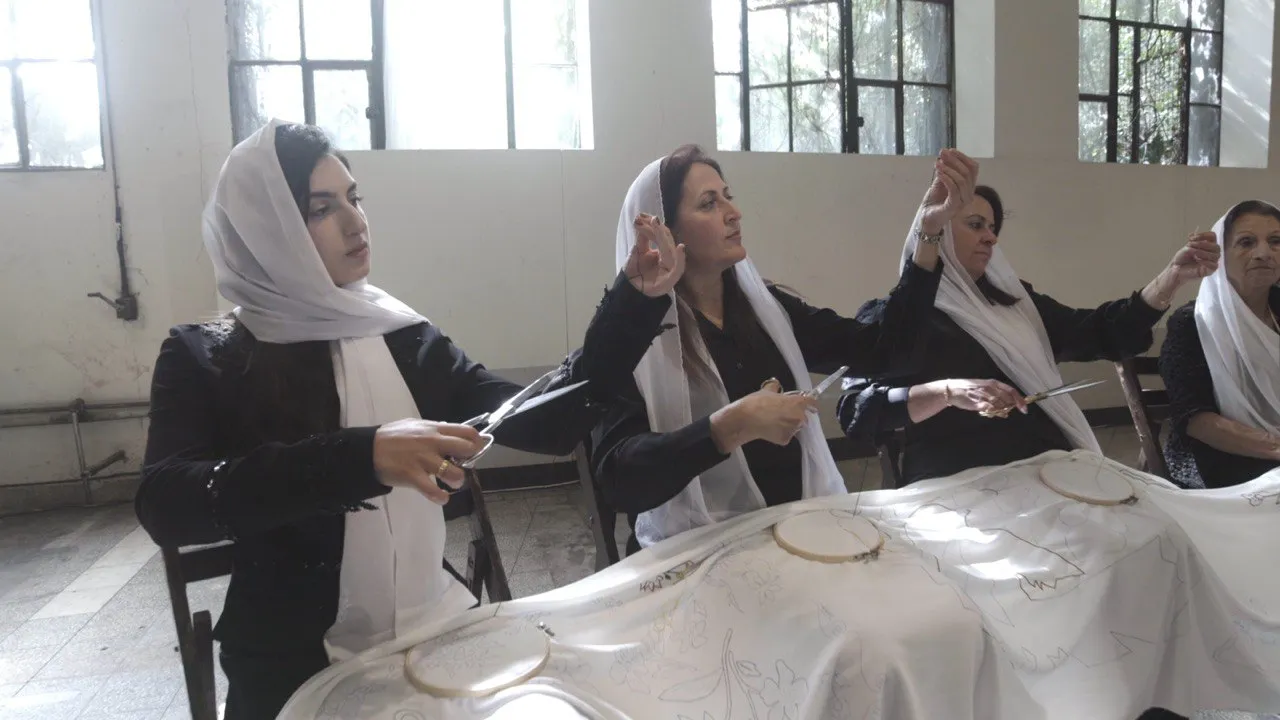
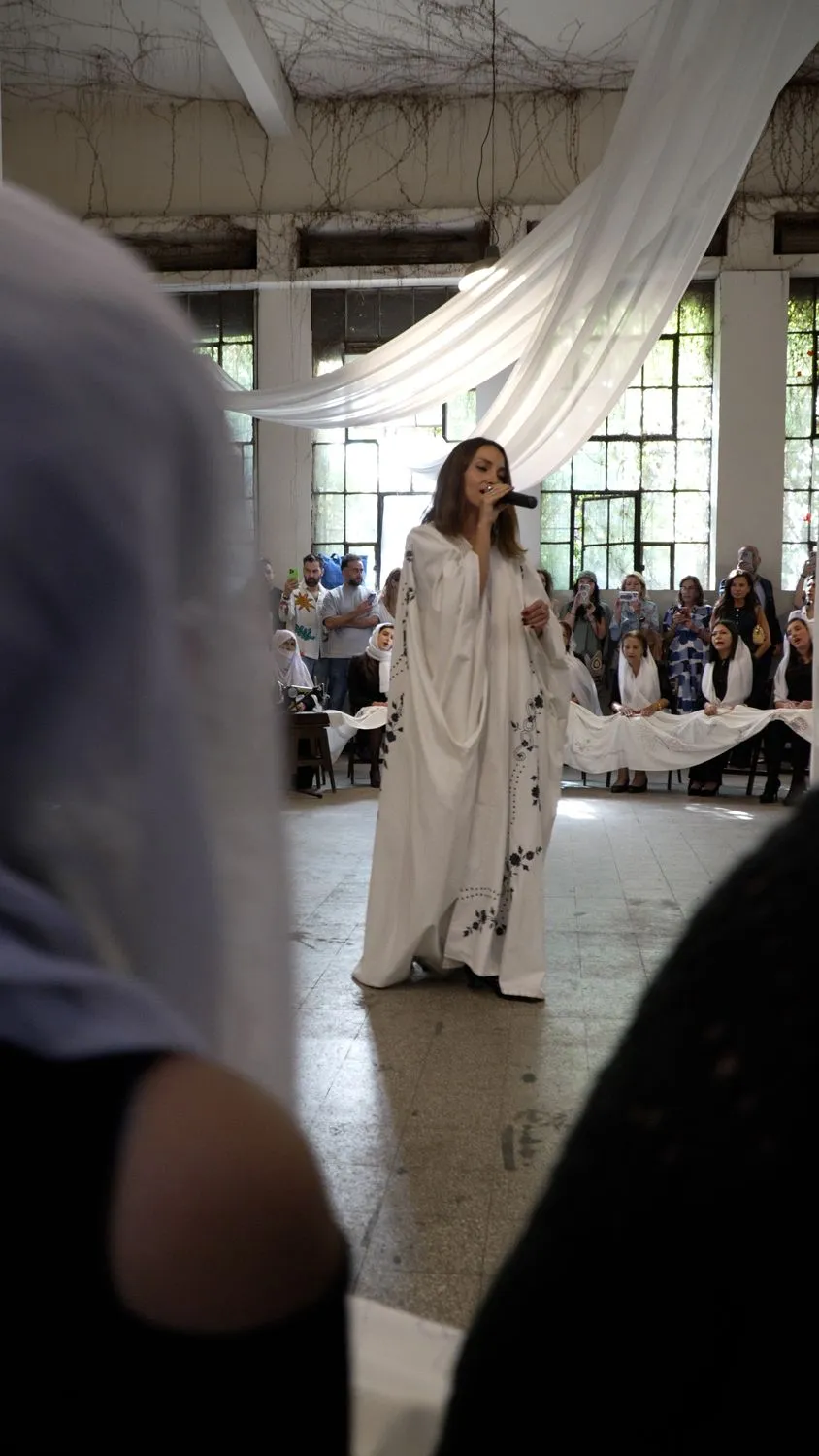
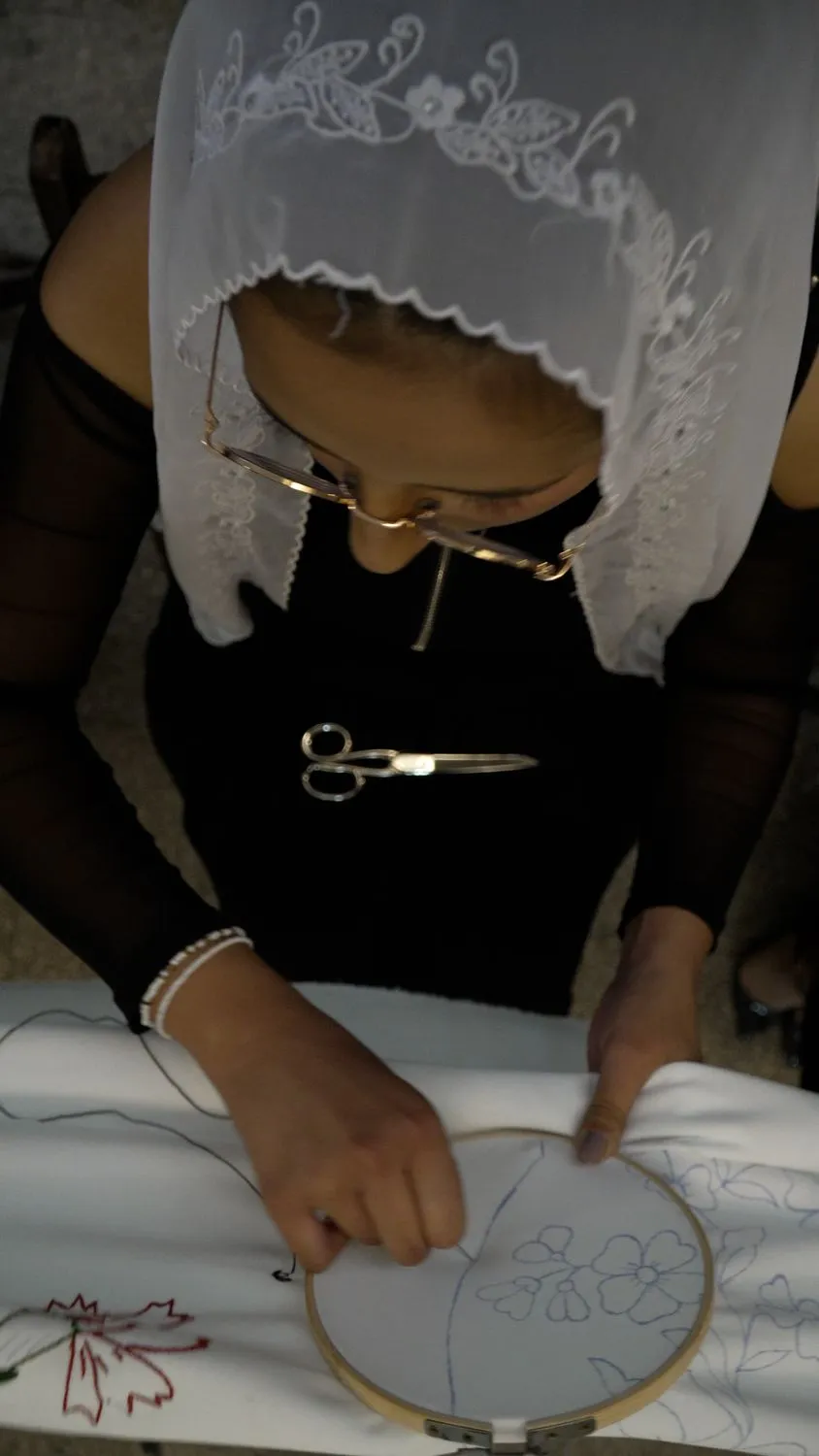
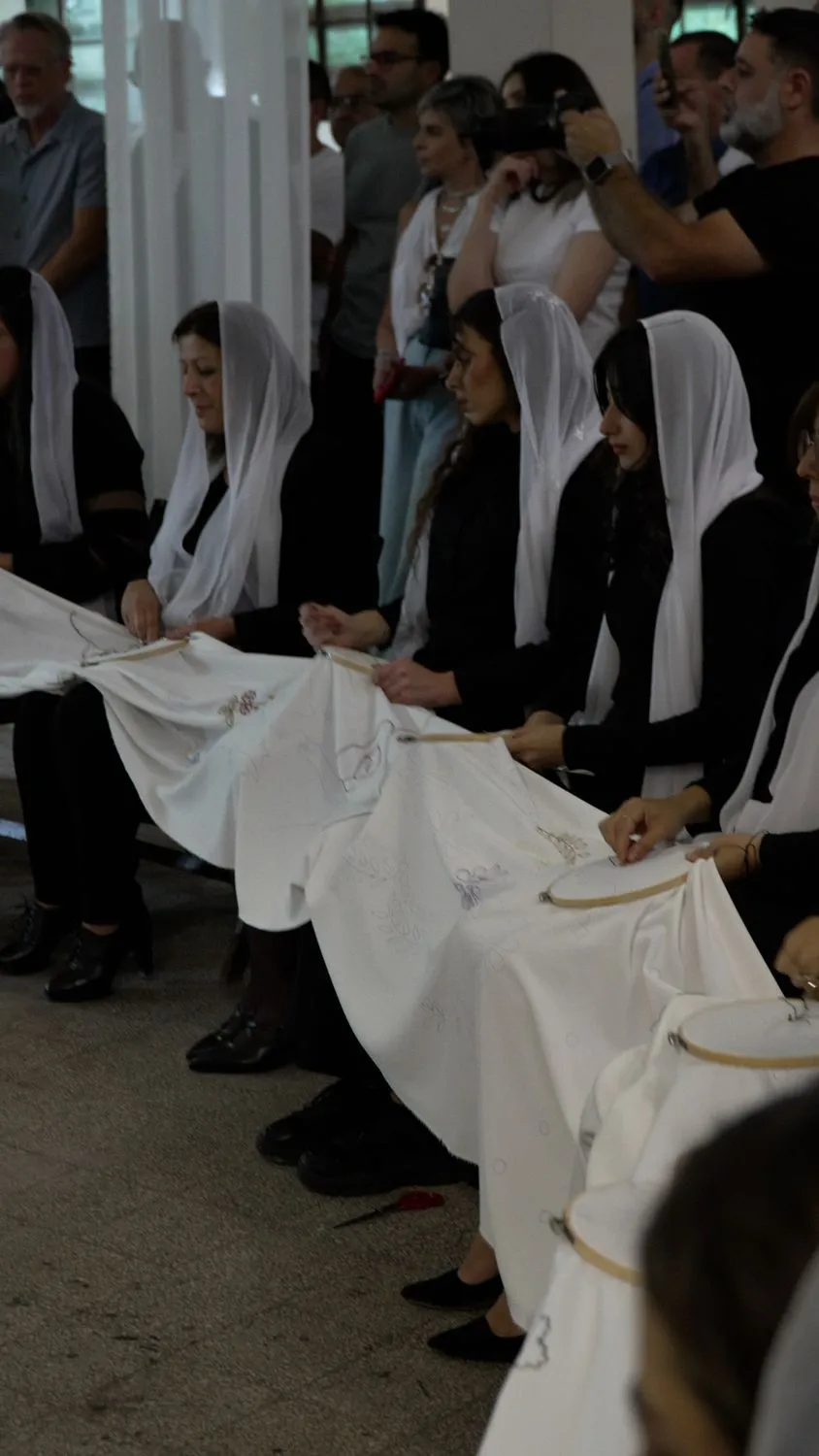
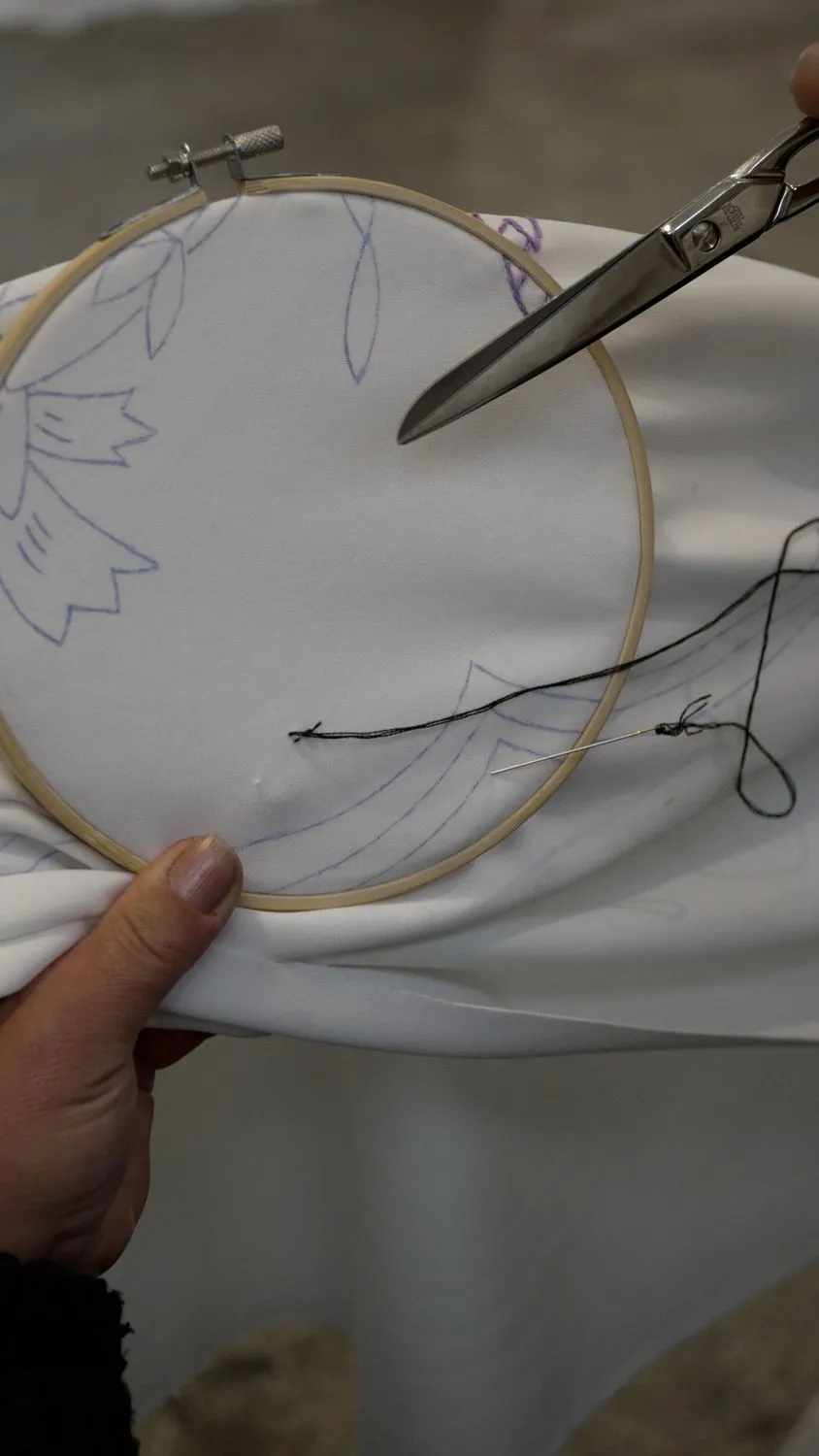
The factory's doors opened with An Embroidered Dream, a live performance by designer and storyteller Salim Azzam, featuring forty women in a charged circle. Set to the haunting voice of Lynn Adib, the piece unfolded as a living circle of care and memory — a gesture of love stitched into fabric. Inspired by Azzam's earliest memories of the embroidered linens made by the women in his village, the performance celebrated craft as both a communal act and an emotional language.
“As a child, I would wake up on a pillow embroidered with good morning, and fall asleep on another that said good night,” Azzam recalls. “It was such a tender way of showing love — a small, everyday act of care. This performance was about bringing that feeling back, about women coming together, mother to daughter, to keep those gestures of love alive.”
The collective rhythm of women's work also resonates in Sarah's Bag's In Her Hands, gathering crocheted and hand-finished heirlooms from across Lebanon and arranging them to evoke the traditional circles where bridal trousseaux were made. "Most of these crochet covers are lent to us by women, because they would not accept to sell them — they all have so much emotional value," Sarah explains.
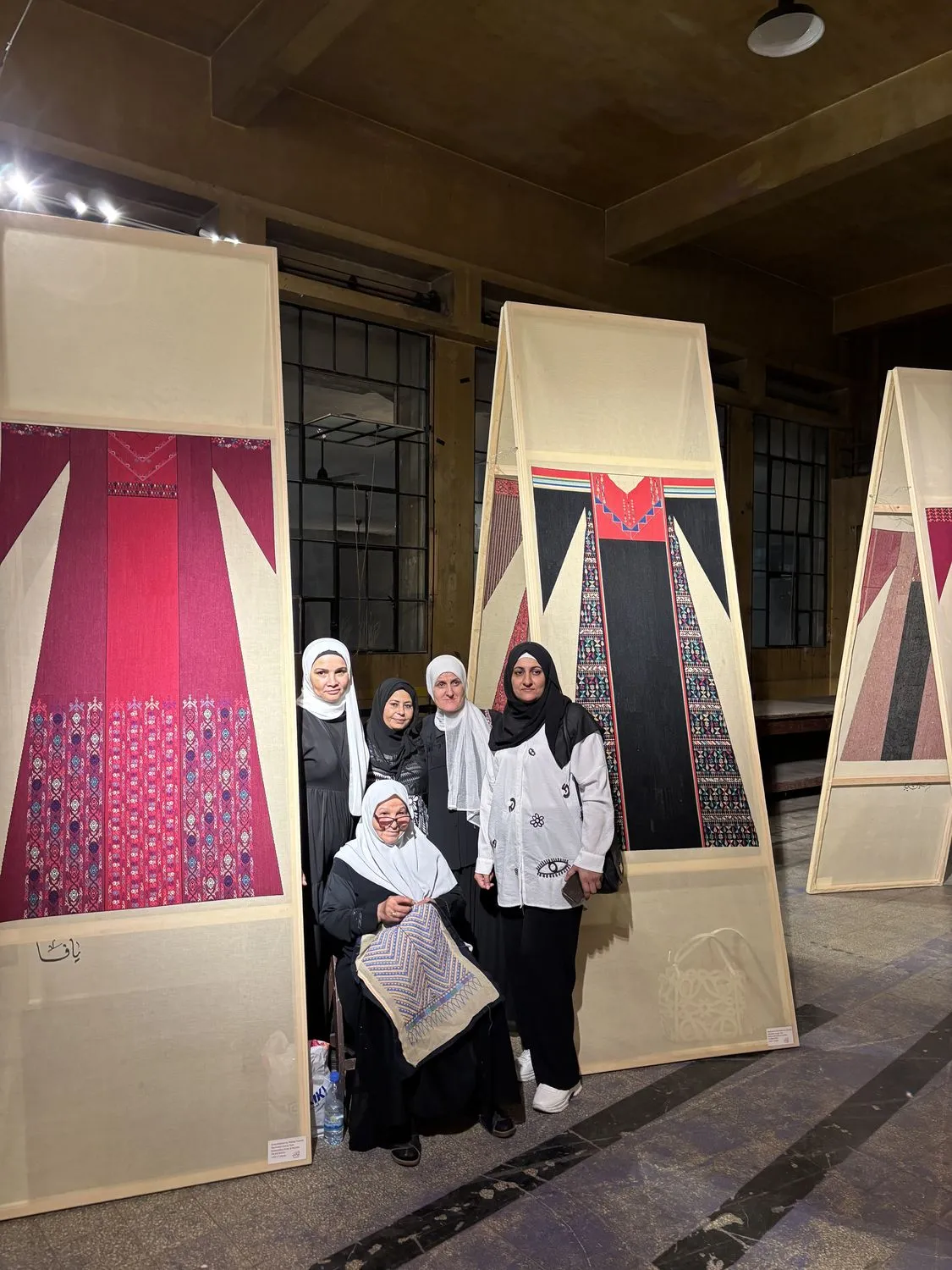
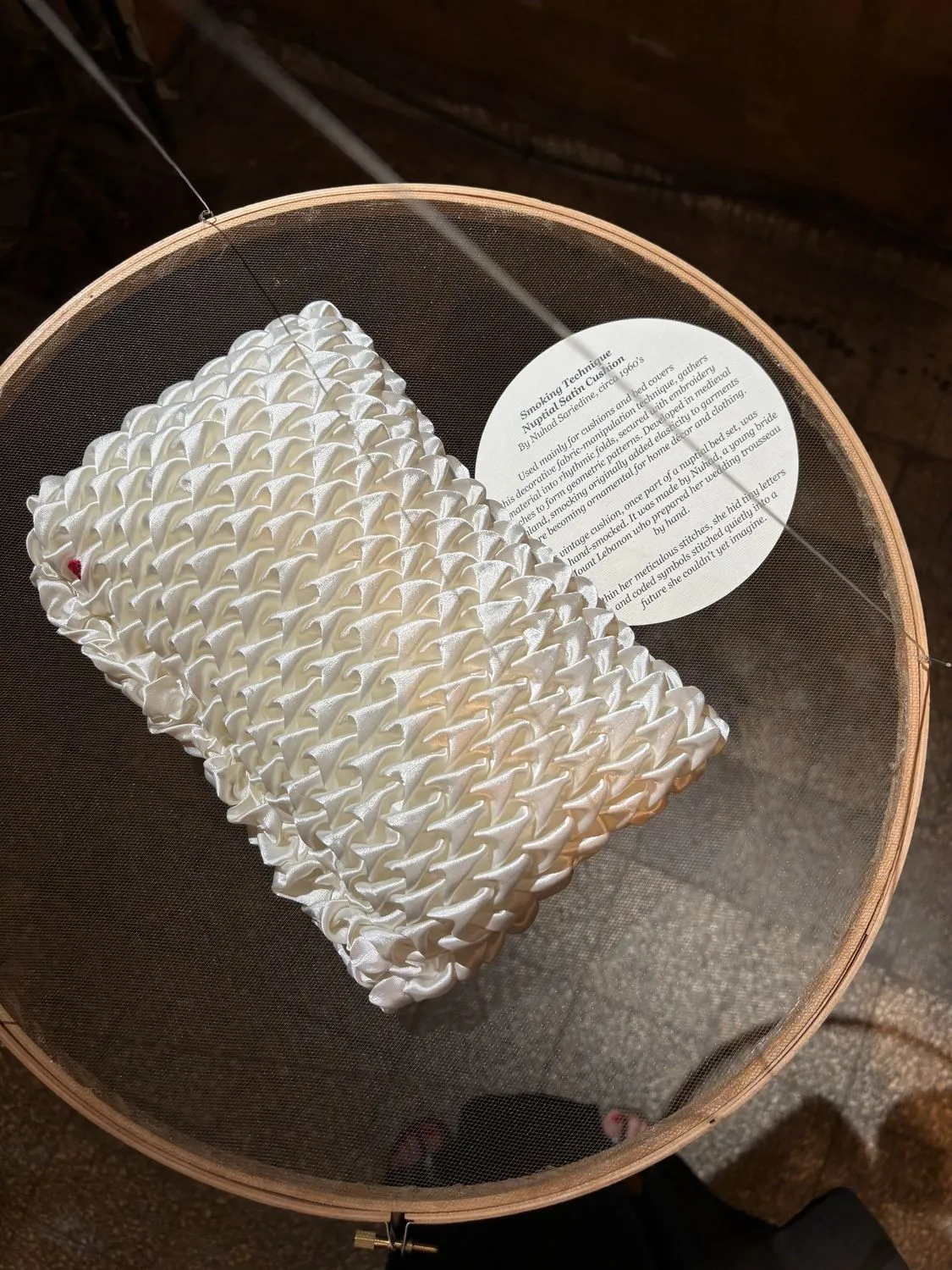
The work of INAASH also stands as a testament to women's hands shaping culture and memory. This Lebanese social enterprise presented six thobes, hand-embroidered over eight months by Palestinian women refugees in Lebanon. Each dress reflects the patterns and stories of a different Palestinian city, serving as a living archive of resilience, resistance, and cultural identity.
Turning to the fabric of the city itself, Ahmed Amar's Textured Love traces his personal journey through Beirut. This large-scale mural is composed of diverse textile patches, each carrying a fragment of his experience — from hope and joy to chaos, collapse and disappointment. Collectively, these fragments form a tapestry of what he describes as "a pure Beirut journey."
"Through this work, I wanted to speak to Beirut and its people, a gentle call to rest, to breathe, to dream. A pause before we start again, continuing our endless journey," Amar explains.
Meanwhile, Studio Hass Idriss's Supperclub turns the act of dining into a tactile theatre of desire and illusion. The table is laid with an embroidered feast, meticulously rendered in fabric and thread by a team of twelve artisans over 2,300 hours of work. Above it, the murmurs of unseen guests play through headphones, their inner thoughts weaving through the scene. Through this interplay of opulence and unease, Supperclub lays bare the social tensions that often simmer beneath moments of shared pleasure, where civility masks rivalry.
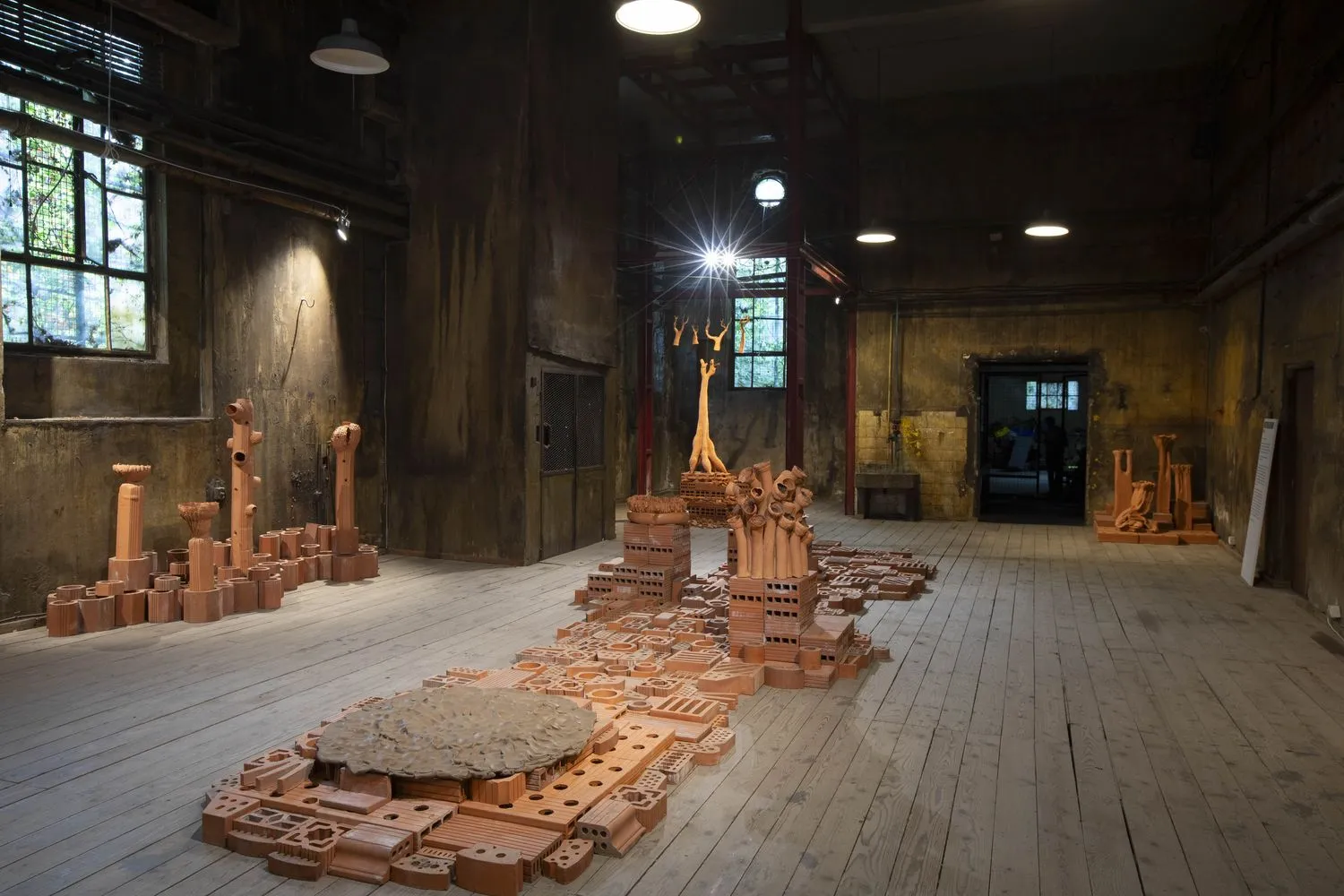
Nearby, Tamar Hadechian's Material Memory, created with Muller Industries, explores clay through the five elemental forces that shape it: starting with raw clay, and moving onto water, air, ether, and finally fire. The work closes with the strawberry tree, a modest Mediterranean species whose underground core survives fire. Embodying memory, continuity, and endurance, the work asks what remains, what begins, and which stories we carry forward.
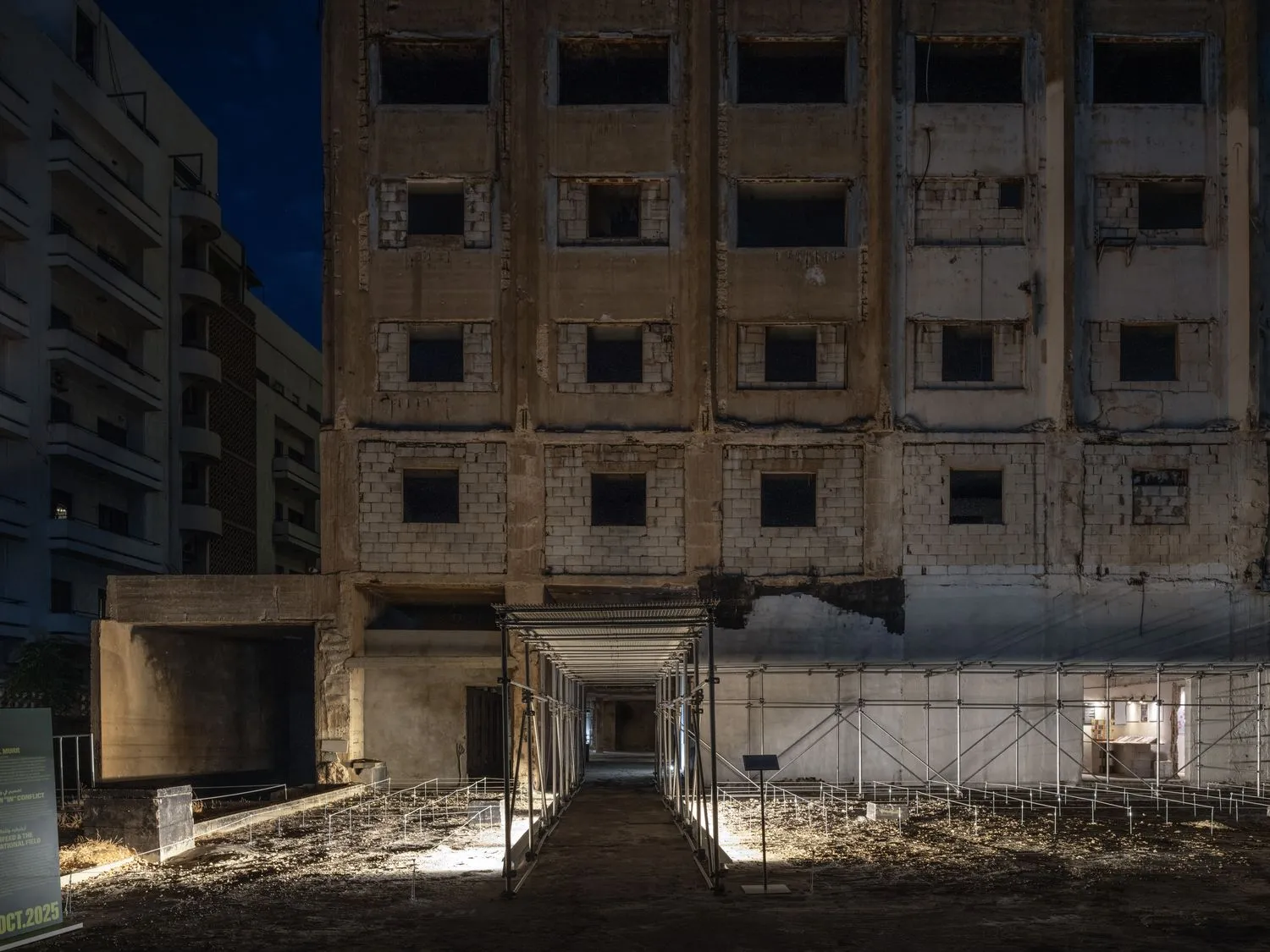
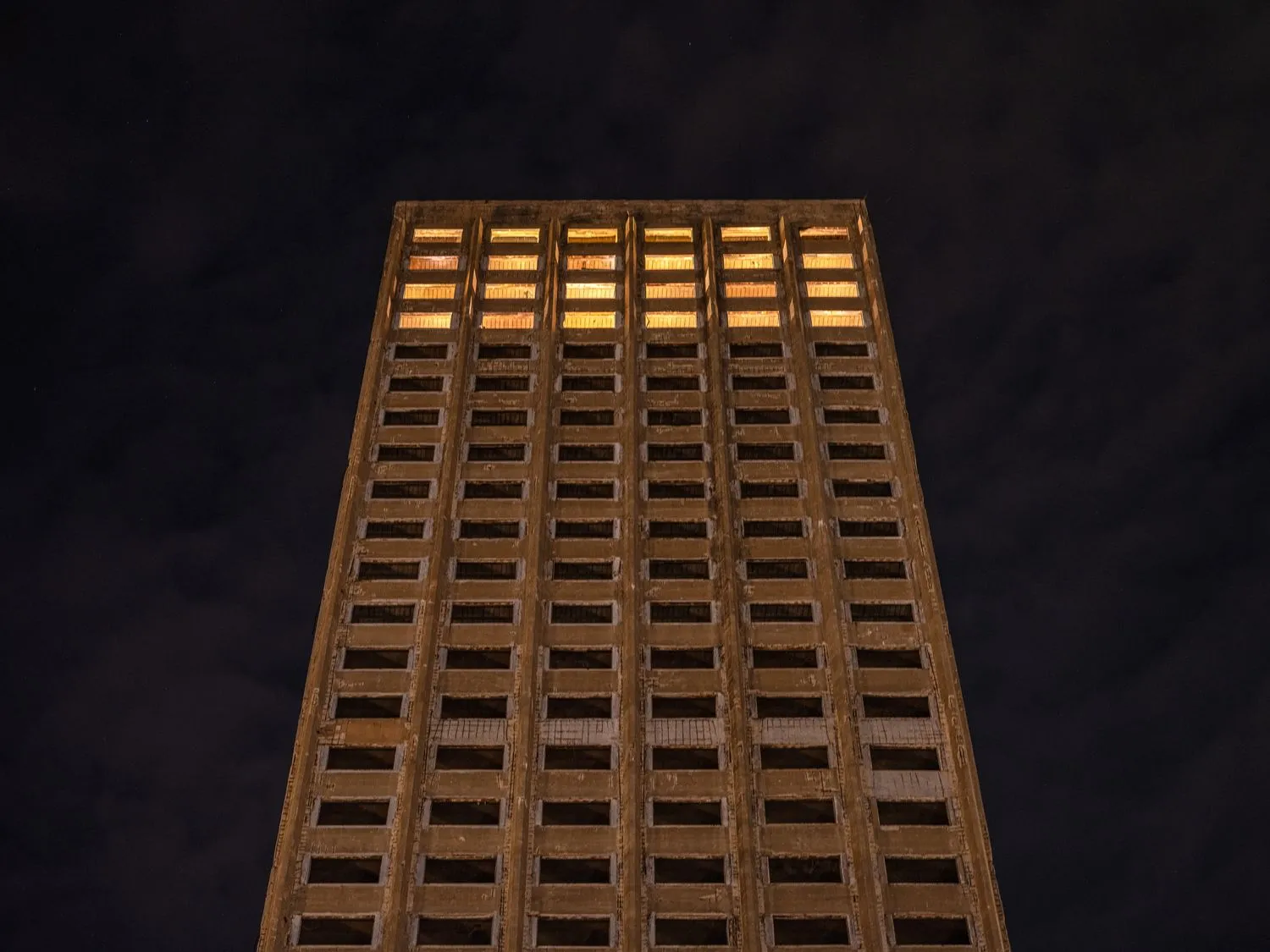
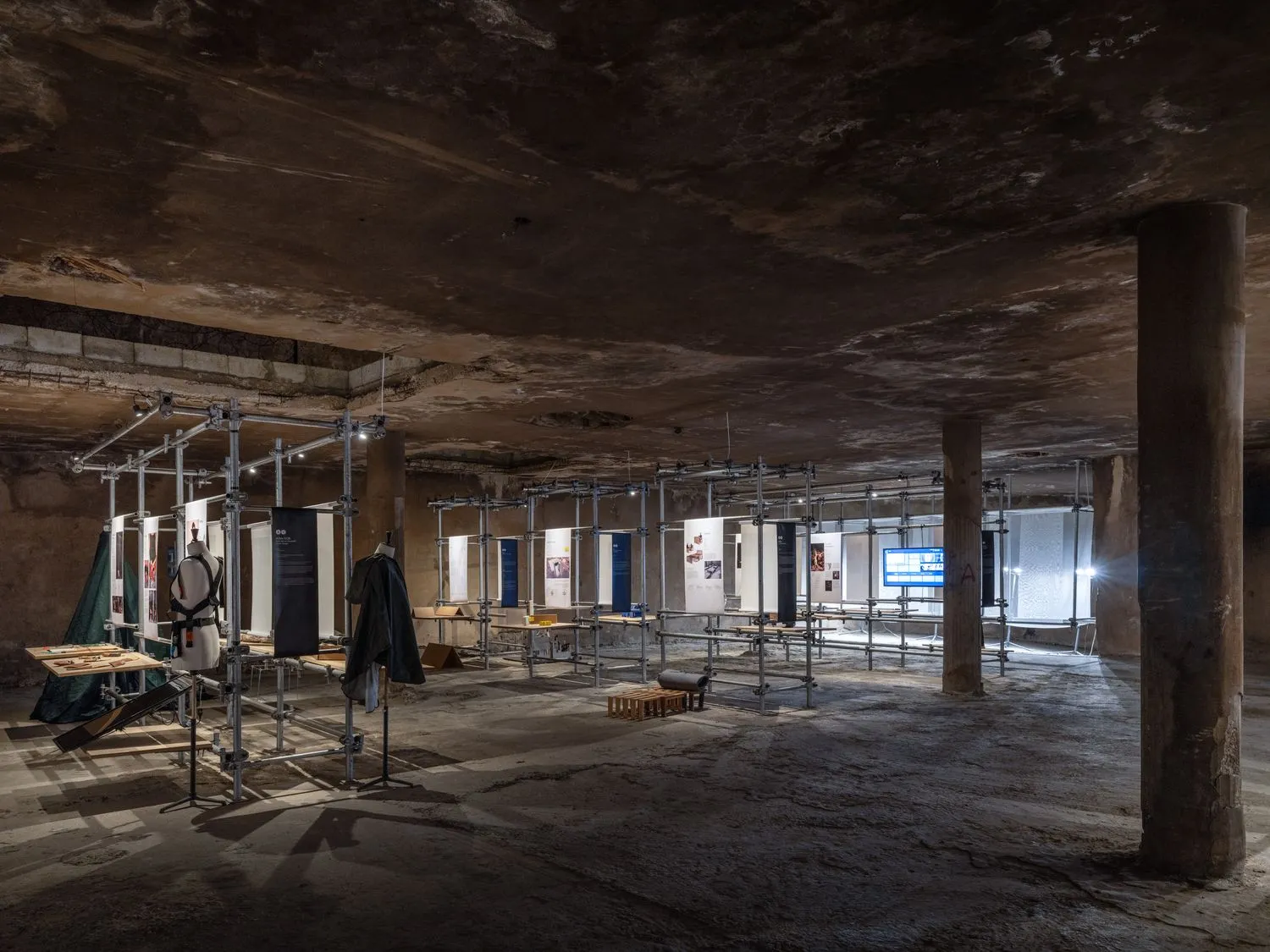
Burj El Murr, dominating Beirut's skyline with its imposing presence, was conceived in the 1970s as the tallest skyscraper in the Middle East, a symbol of progress. Left unfinished by the outbreak of the civil war, it instead became a sniper post and torture site, today standing as a stark reminder of Lebanon's unhealed history. Reopened for the first time in fifty years during We Design Beirut, the building has been transformed into a space for reflection and dialogue.
The exhibition Design in Conflict brought together students from nine universities across Lebanon as part of their semester curriculum. For the curatorial team and this new generation of makers, conflict here became the lens: not war itself, but the questions it forces — what matters most in moments of crisis, how we survive, and how design can respond. Moving beyond mere resilience, these students approached space and form as first responders.
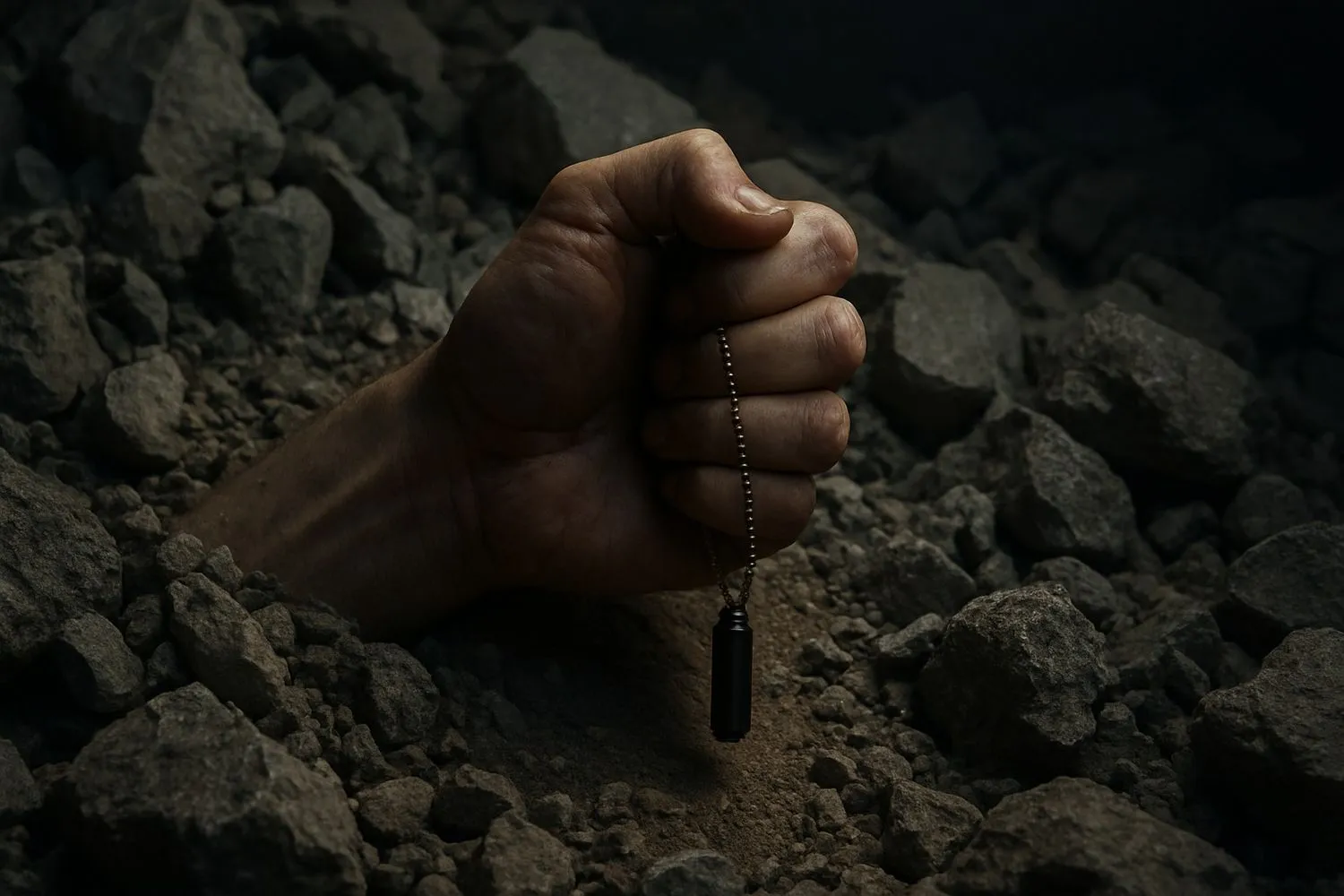

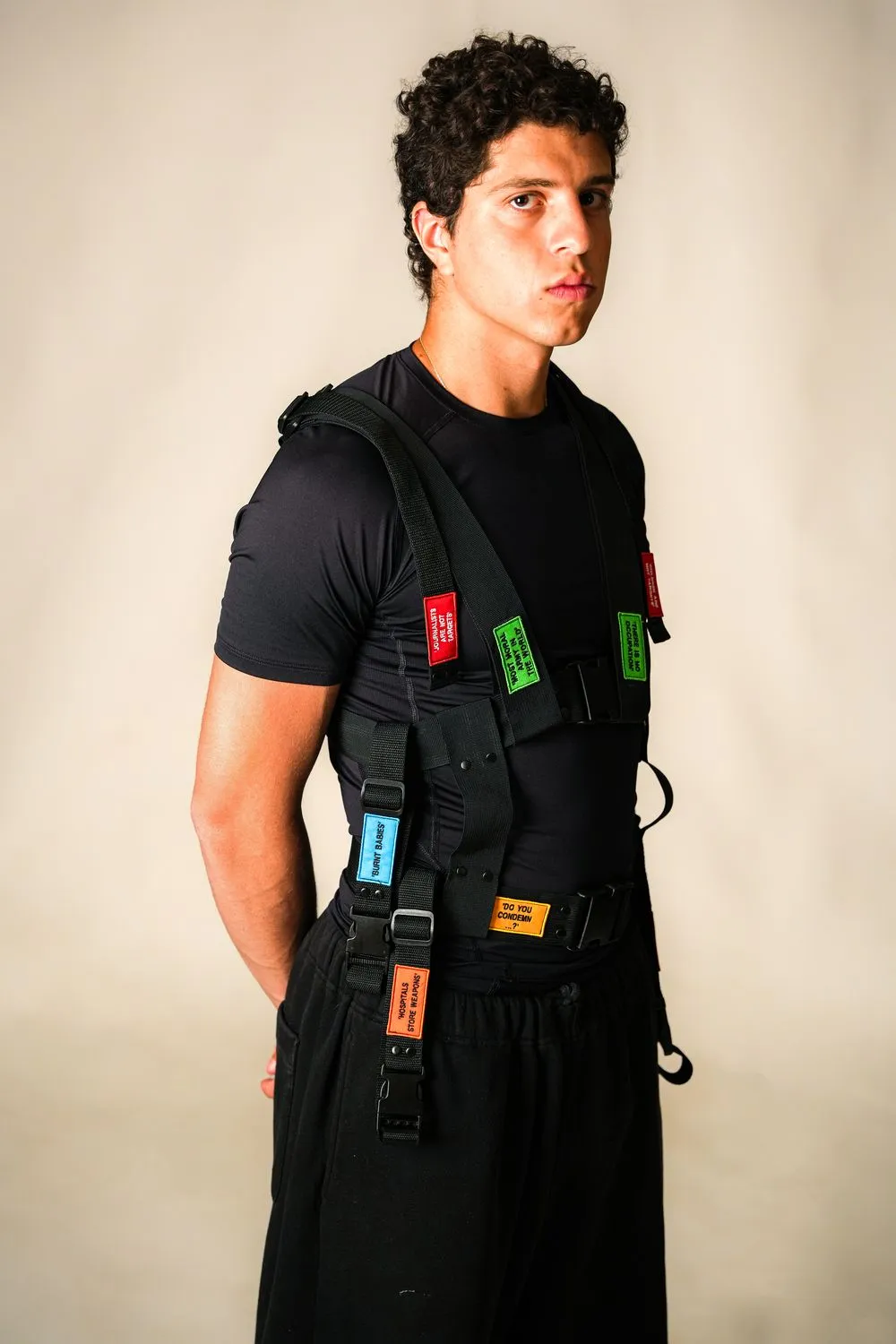
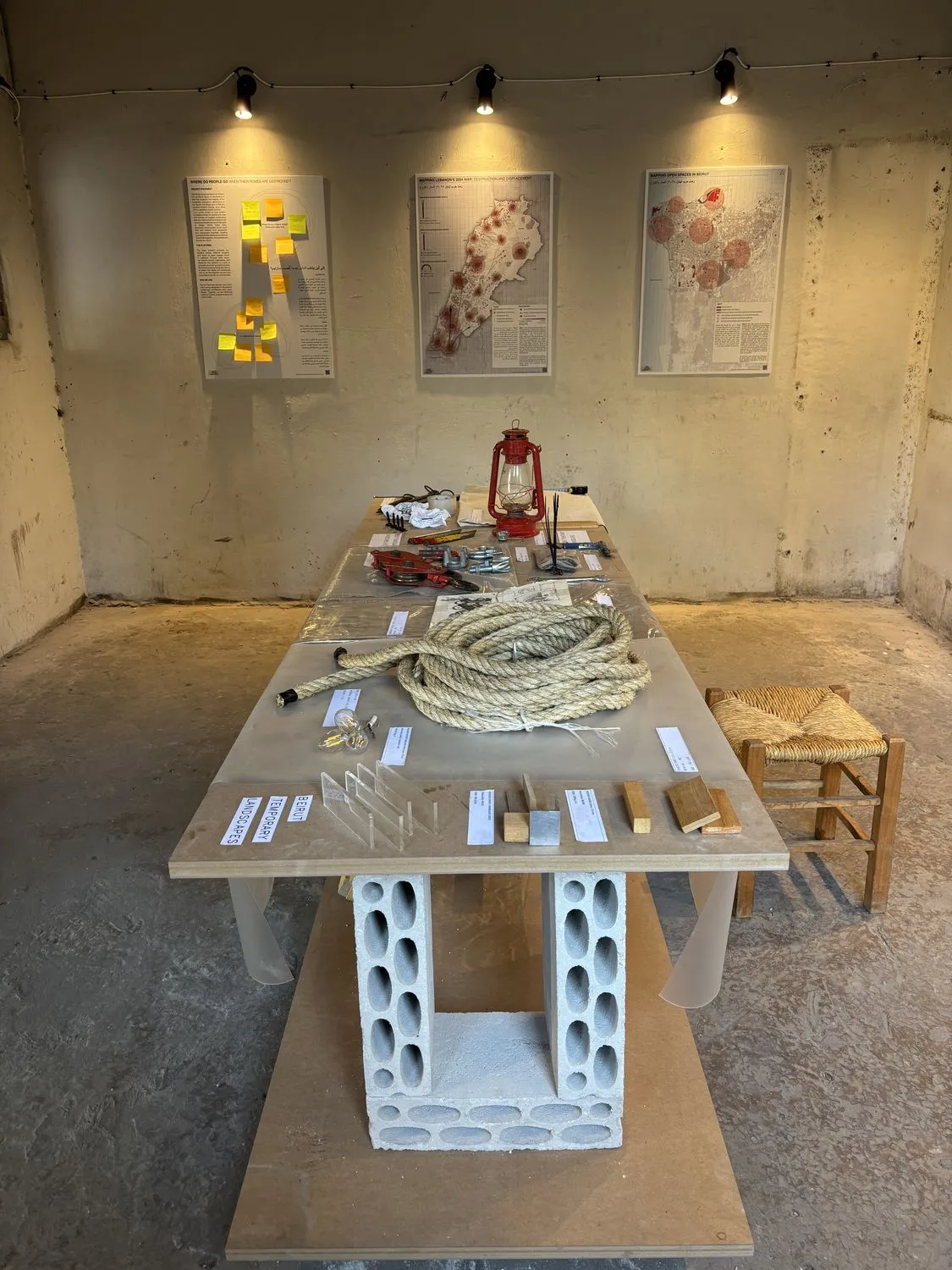
The projects addressed themes of survival, memory, and displacement with empathy, care, critique — and at times, biting humor. Marc Khalil's Survive. Live. Thrive offered a manual of adaptive designs for everyday objects, showing how hangers, ladders, or potato peelers can transform into instruments of shelter, combat and survival. This practical ingenuity gave way to a sharper critique in Sleyman Haber's LifeStrap™, a work of poignant satire presenting a human-carrying harness that lays bare the absurdity of the “human shield” narrative, asking who truly protects whom in war.
Turning to intimacy and loss, Zoe Sakr's Human Black Box proposed a wearable locator and audio recorder to preserve the last words and locations of those who disappear in conflict. Finally, Yasmina Hamdan and Karim Harb's Beirut Temporary Landscapes expanded the scope to the urban scale, mapping open spaces across the city as potential sites of refuge, envisioning collective, self-built shelters where displaced families might reclaim both dignity and place.
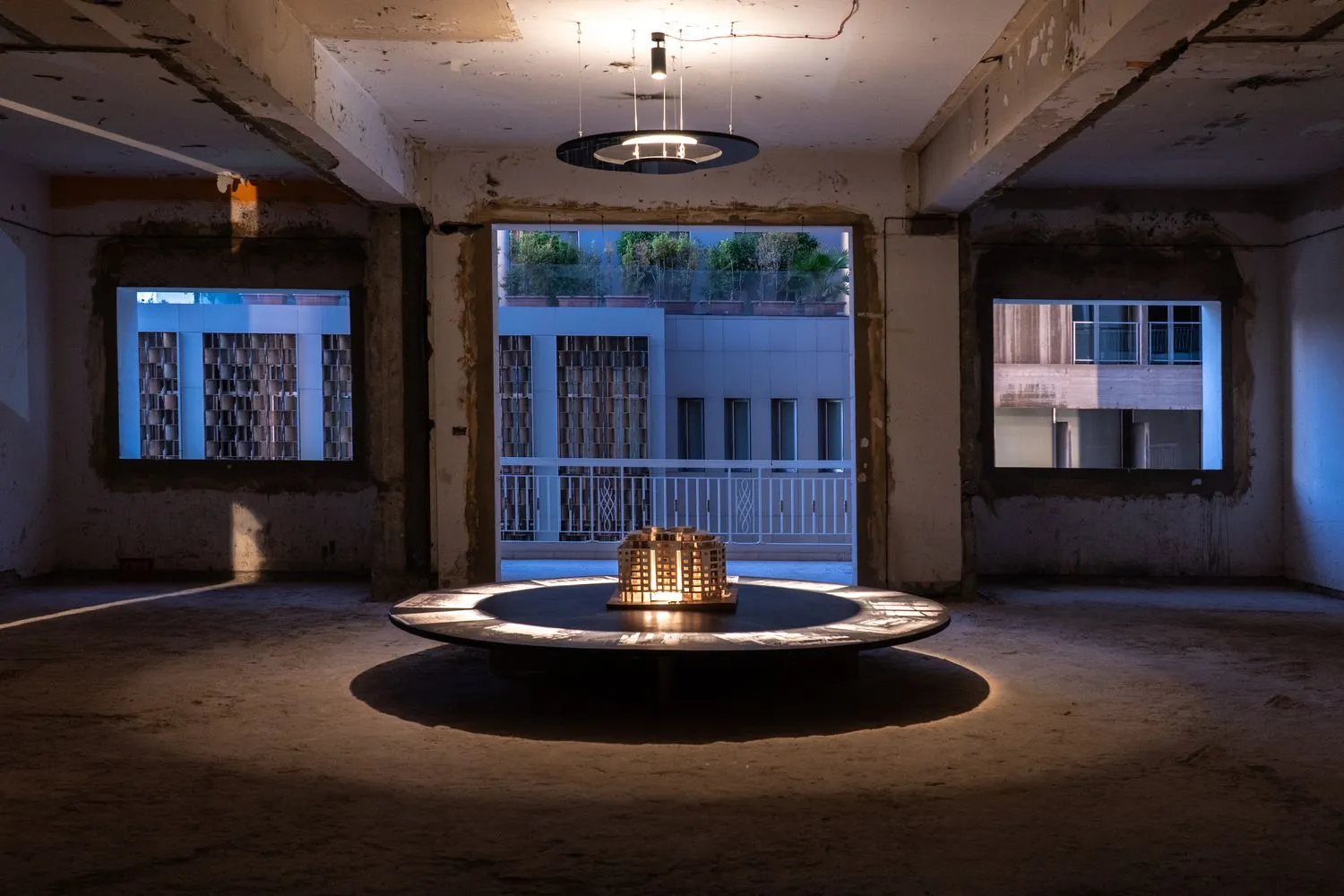

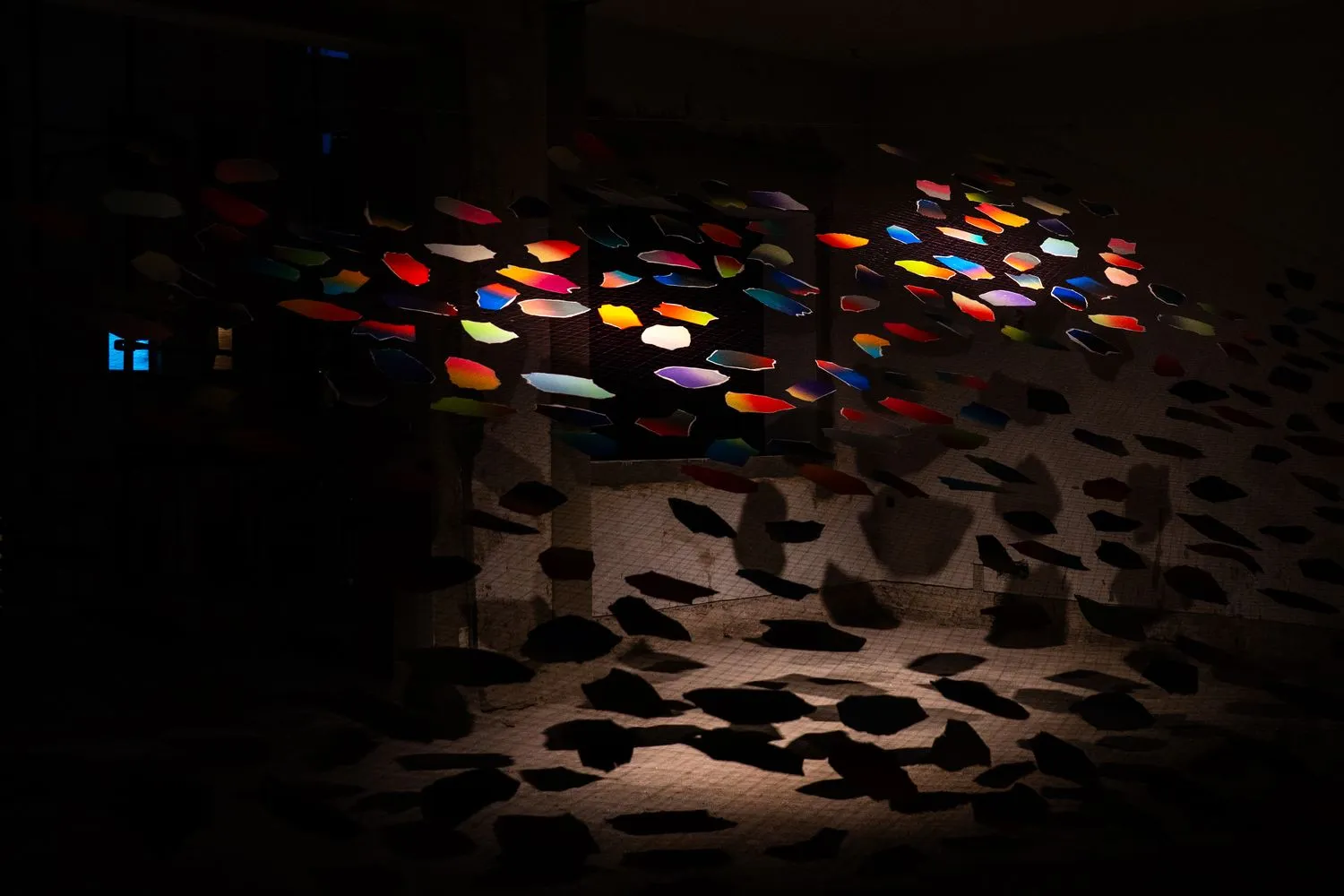
Another of Beirut's modernist landmarks reawakened for We Design Beirut, Immeuble de l'Union in Sanayeh provided an evocative setting for two exhibitions: Rising with Purpose and A Journey of Light. Built in 1952 and now under restoration by architect Karim Nader, the building stands as a monument to the city's post-war optimism and design heritage.
Curated by Karim Nader Studio and Noura Hakim of Atelier33, A Journey of Light traced a path through the building, exploring how light shapes space, memory, and emotion. From the basement, where Alfred Tarazi's City of Musk transformed found objects from Sabra and Shatila into a sculptural installation, to the upper levels, where Christian Pellizzari added a poetic touch with a glass sculpture inspired by Lebanon's national flower, each floor offered a unique dialogue between light and architecture.
Meanwhile, Rising with Purpose gathered Lebanese designers under 30 whose works balance form, function, and societal relevance, demonstrating how design can respond to pressing cultural and environmental needs.
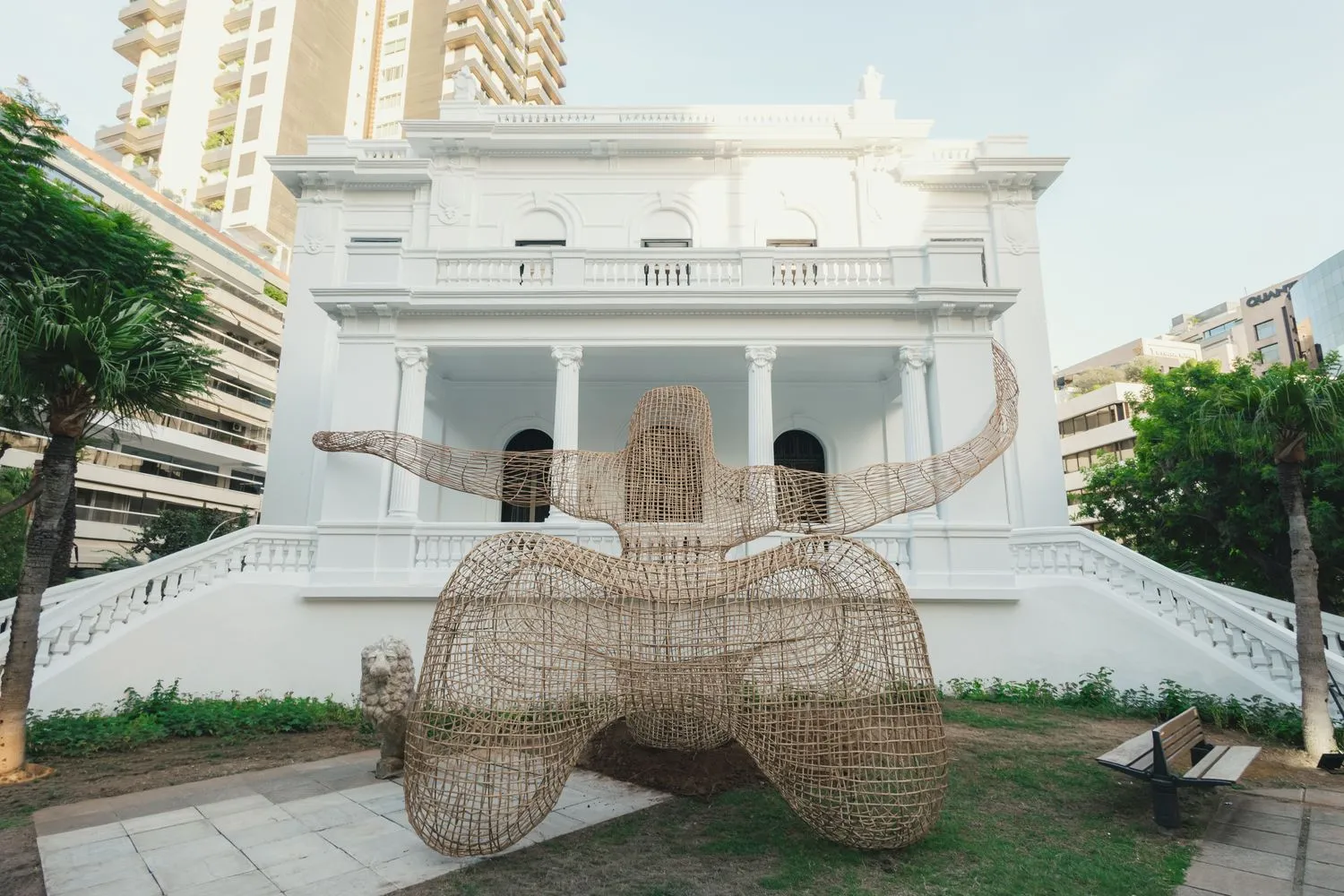
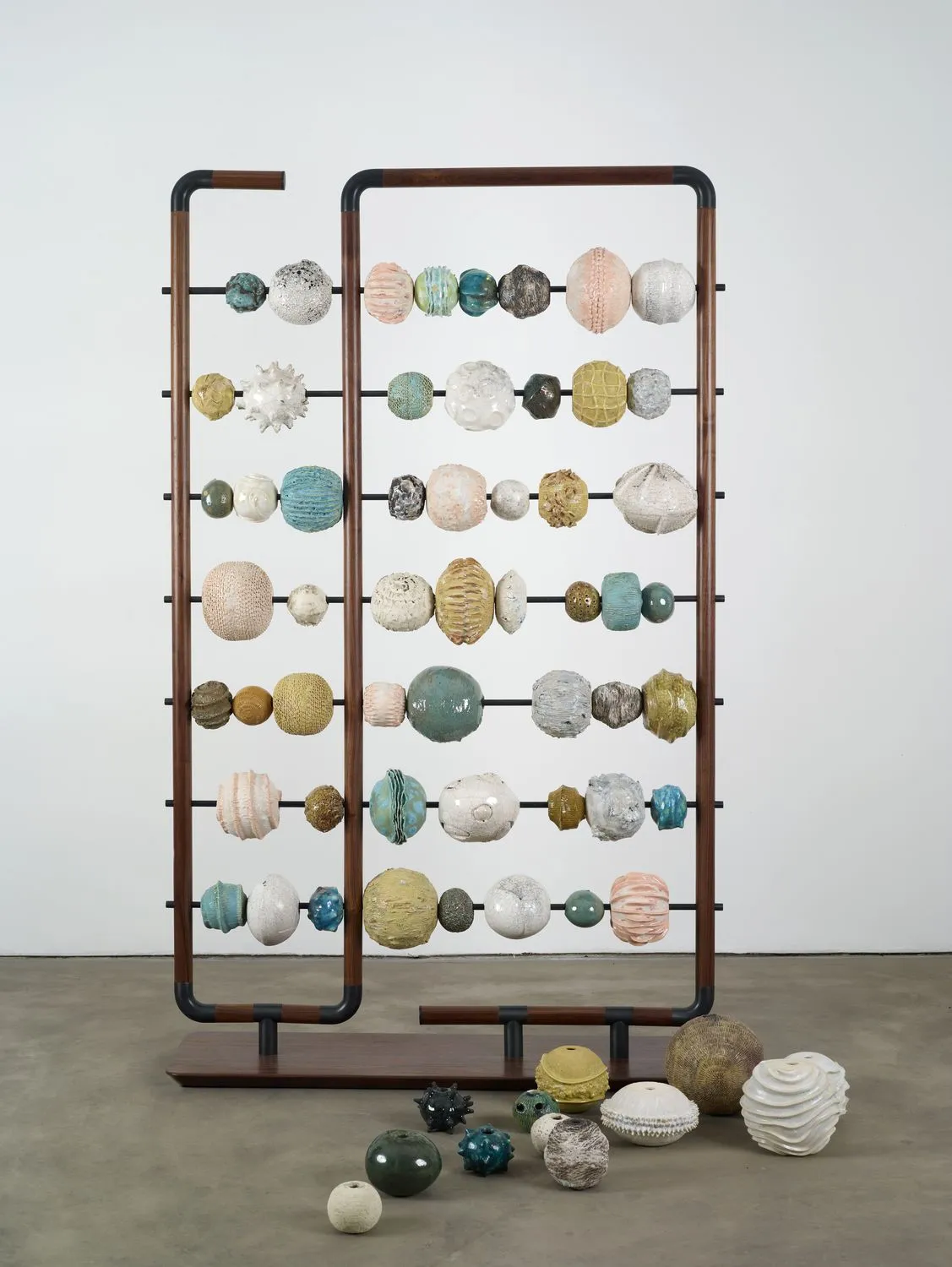
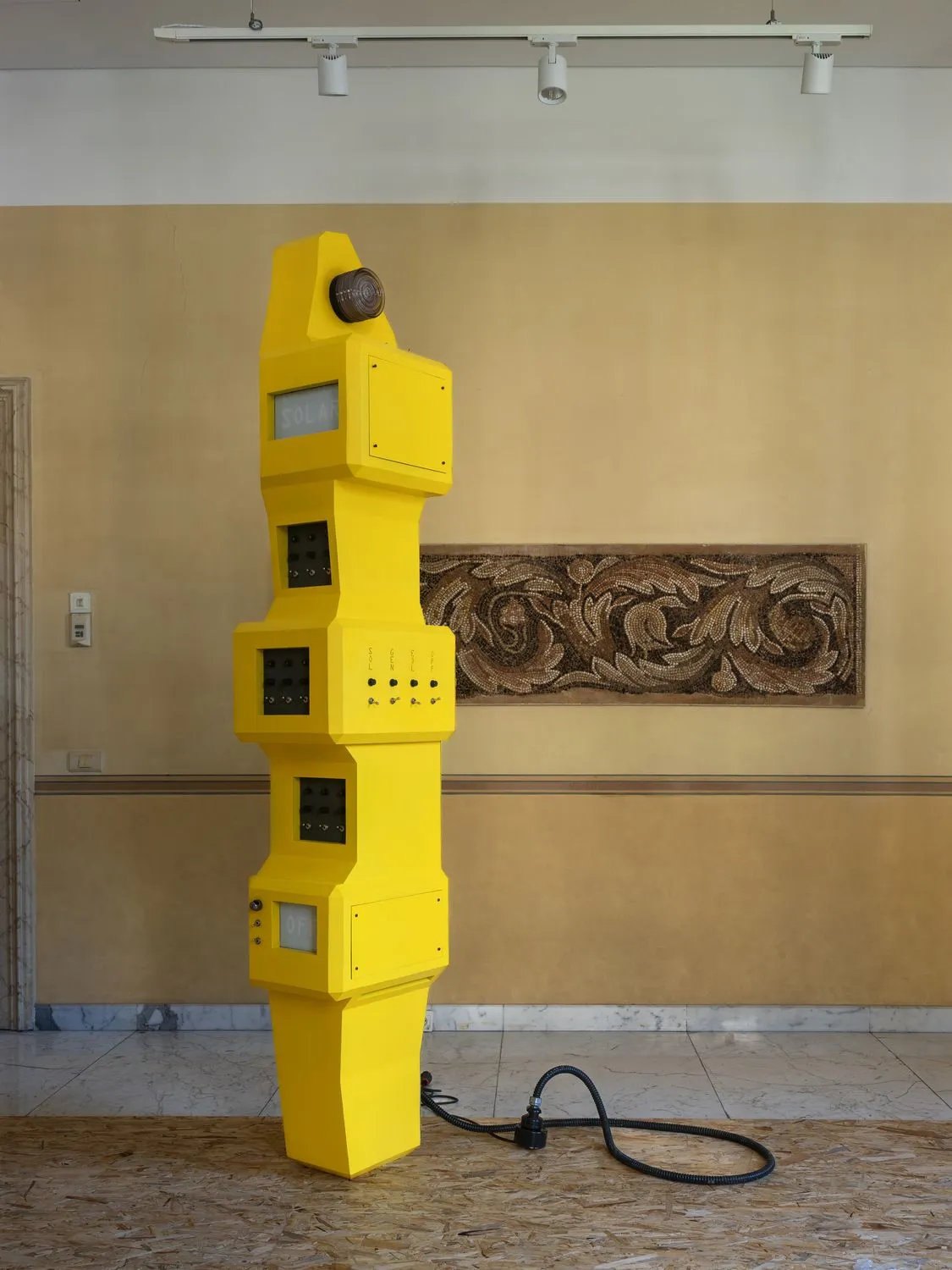

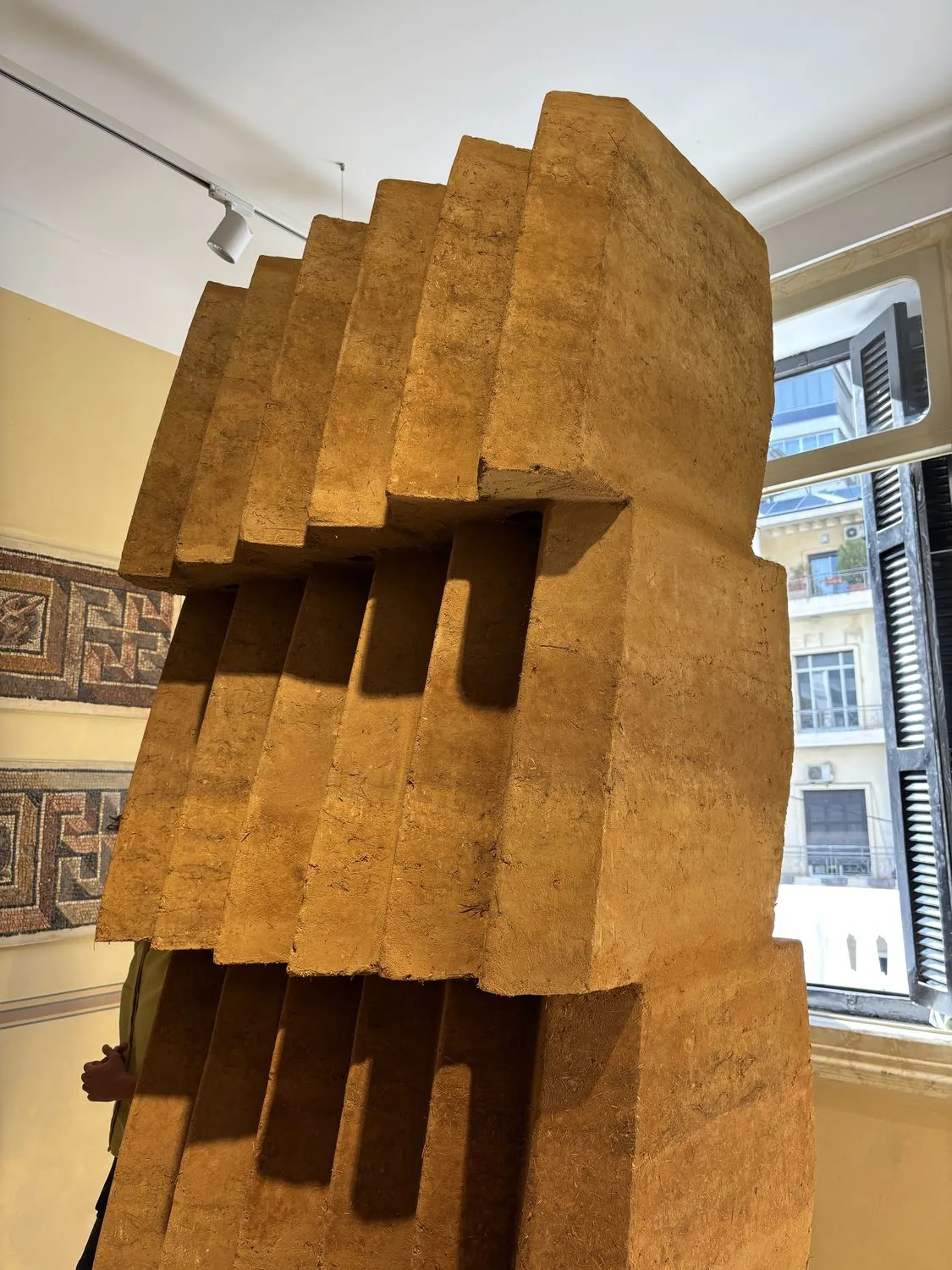
The people and makers of Lebanon stand tall and proud despite everything they have endured, and this perseverance and sense of identity were reflected in Totems of the Present & the Absent at Villa Audi. Set within the villa's rare blend of Ottoman and European architecture, these works, exploring presence, memory, and legacy, contributed to the ever-evolving puzzle of Beirut’s identity.
Rouba Khalil's Silo reimagined the city's lost wheat silos as a living seed library, preserving Levantine heirloom varieties while resisting the erosion of food sovereignty. Built with straw and soil, the work merges design, ecology, and food justice in defiance of the colonial project.
Echoing this spirit of adaptation and systemic resilience, Dia Mrad's PSI-01 (Power Supply Indicator 01) turned Beirut's fragile electricity network into a luminous metaphor for survival. In a city where power cuts are woven into daily life, the sculptural system signals shifting sources — grid, generator, solar, or none — translating political and infrastructural instability into a language of design.
Meanwhile, Tara Jane Tabet's Evocative Reminder traced Beirut itself. Walking the streets, she collected broken cement bricks and reshaped them with clay, stacking them into a fragile yet steadfast totem lamp. Waxed with natural pigments, the piece honors both the city's scars and its soft, enduring side. “I wanted to echo this side that we can break at any point, but also show the soft side we still have in Lebanon,” Tara explained. “The lighting is to show that we still have this tiny bit of hope of having a normal life.”
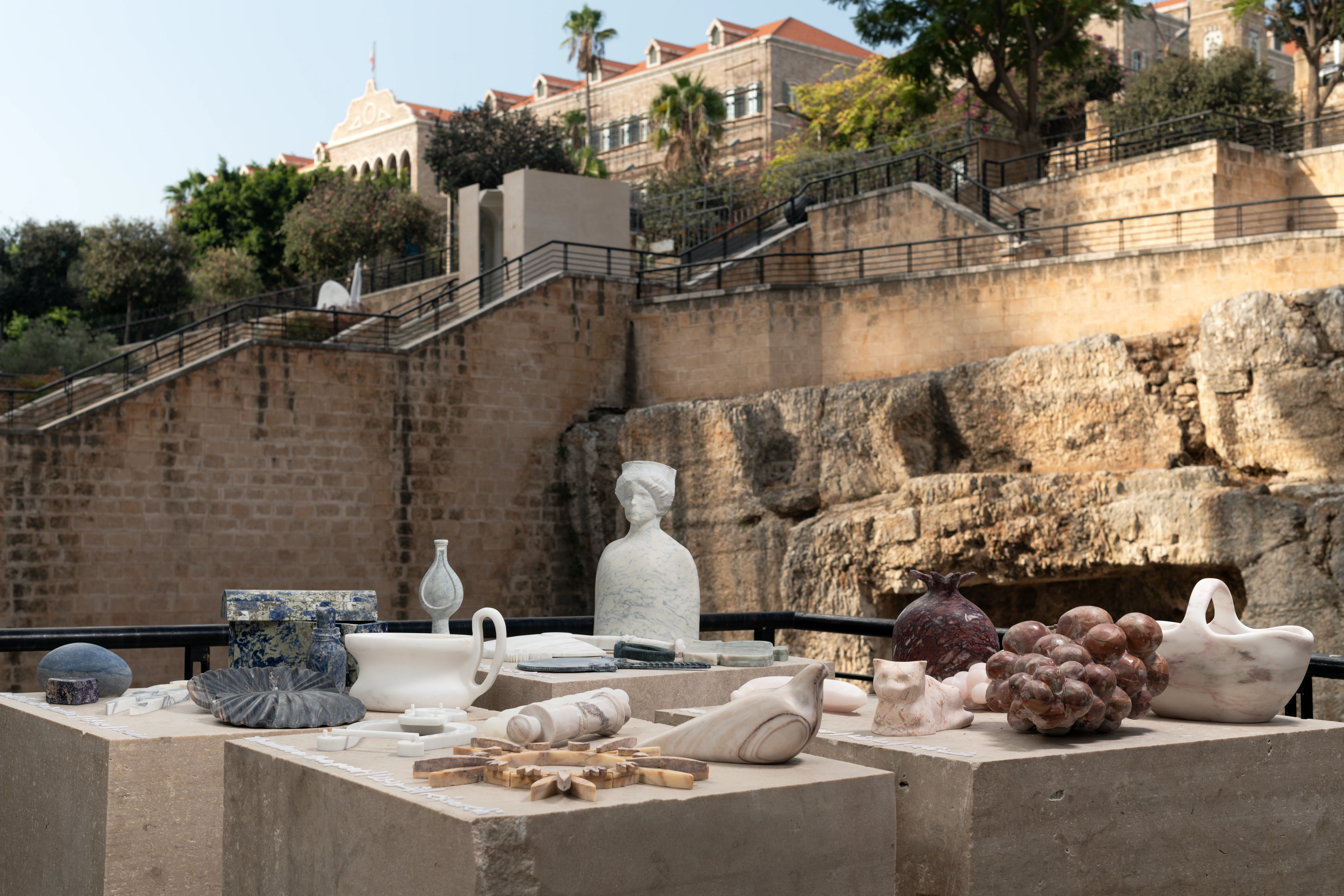

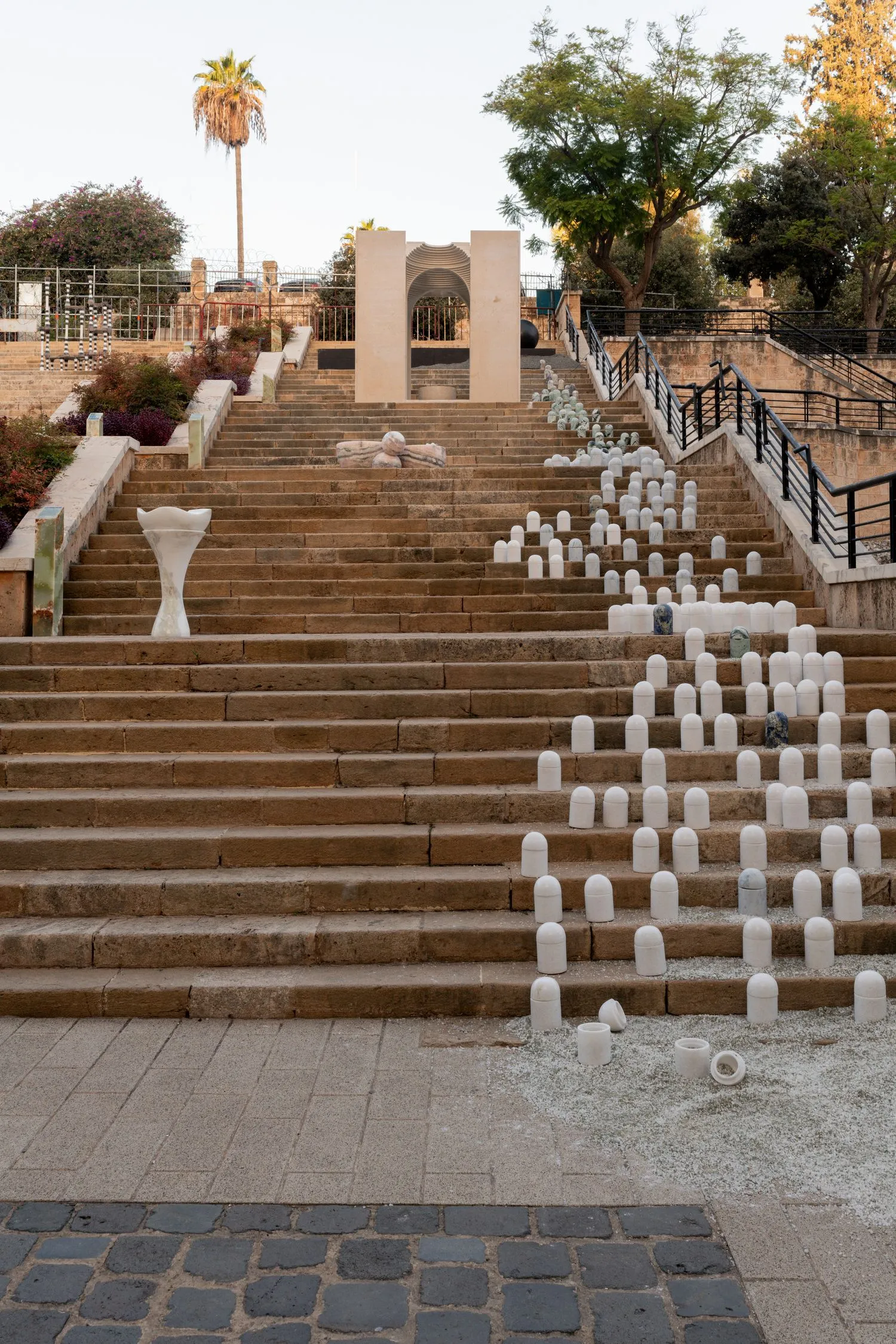
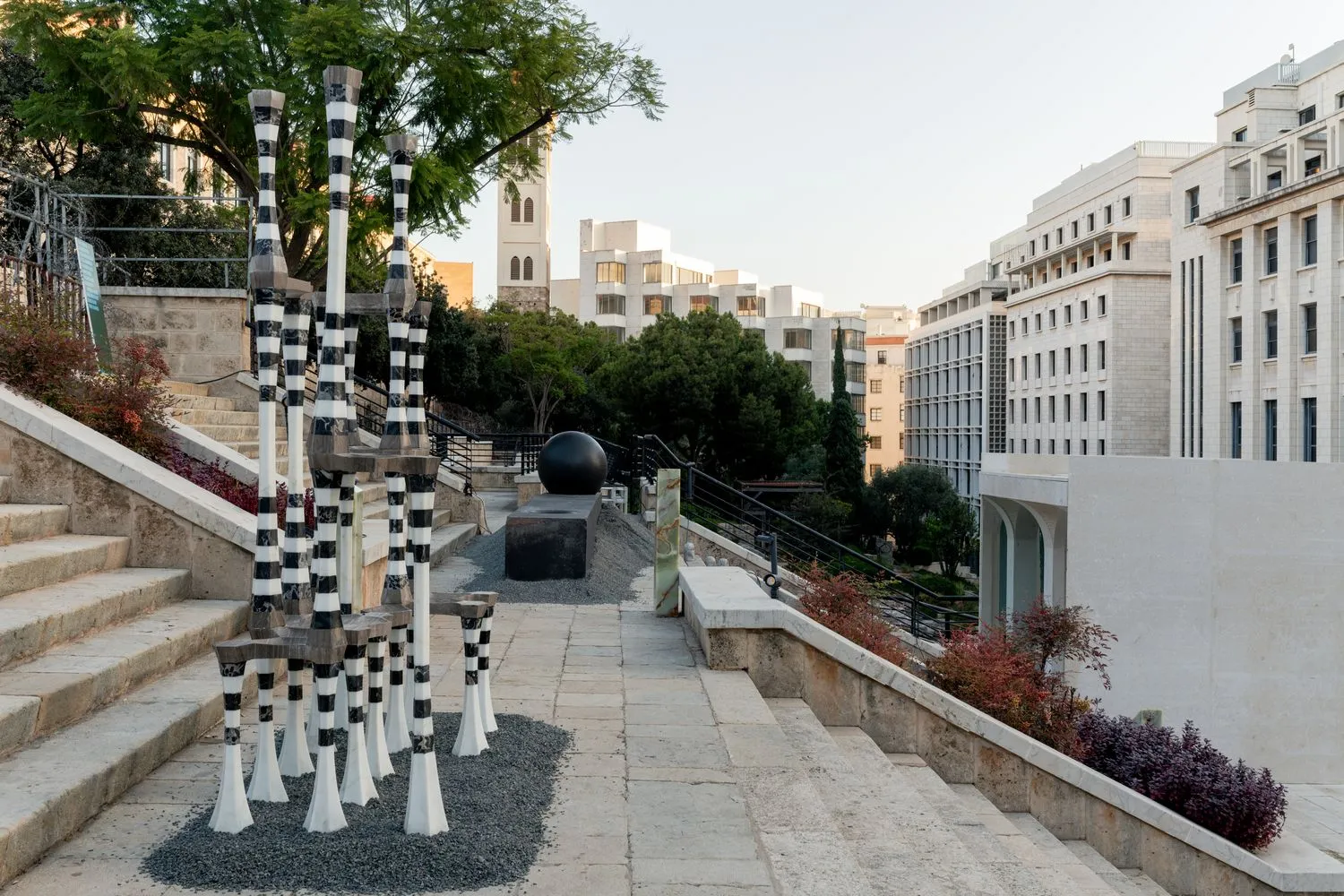
At the Roman Baths, which date to the end of the 1st century AD but have long remained hidden, curator Nour Salame turned to the idea of healing — both of place and people. Of Water and Stone sought to renew that connection, inviting designers to respond to the site's material and symbolic resonance through contemporary marble works. "The question is not how to romanticize the site, but how to create a contemporary connection — how to care for something that has outlived us and will outlive us all," Nour explained.
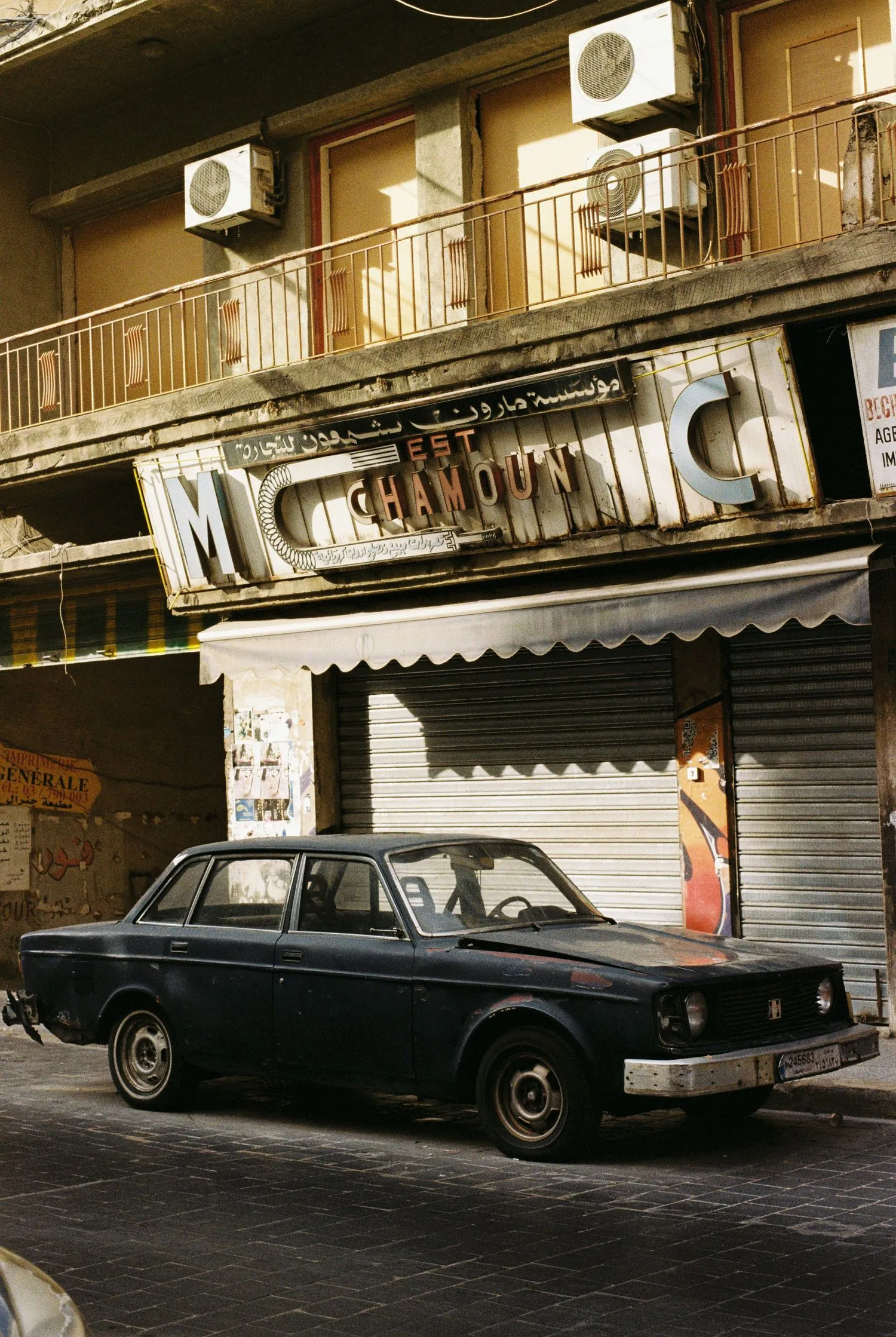
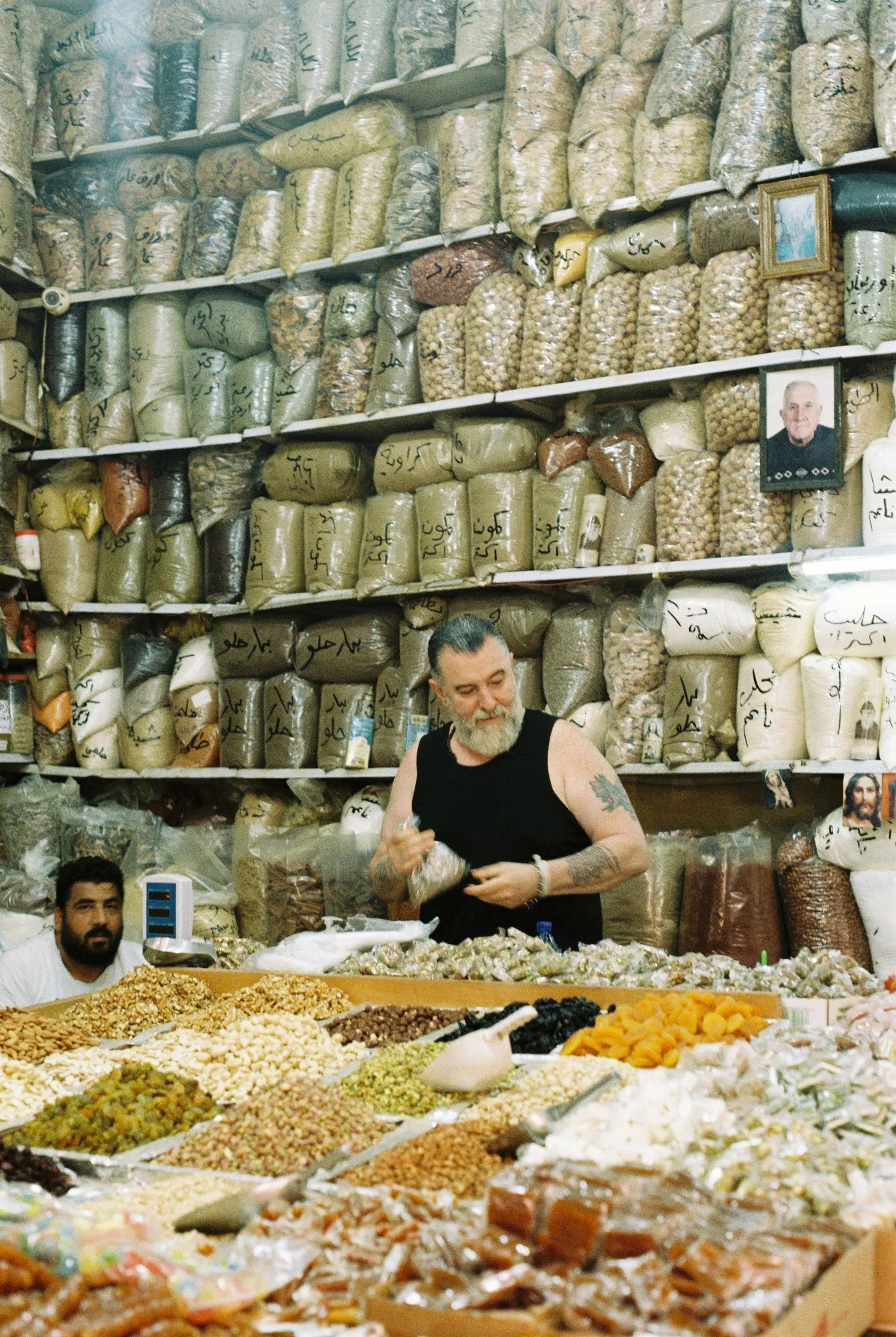
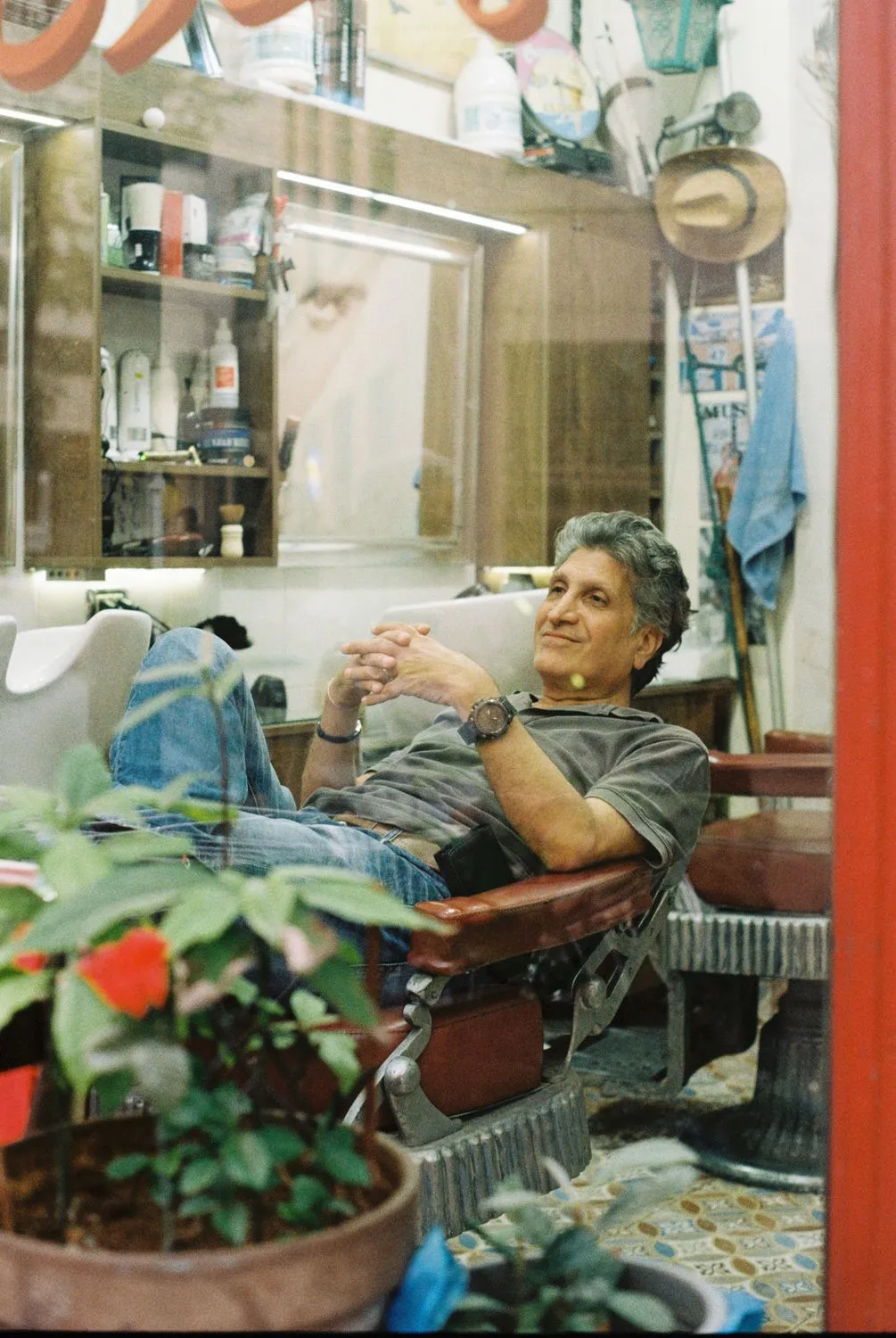

"I want people to see, live, and feel our Beirut—the authentic Beirut—through its culture, aesthetics, design, way of living… everything,” Samer told me a few days before the opening. "We have a history to be proud of, and through We Design Beirut, we want visitors to feel that pride, get involved, care, and hopefully support initiatives that help build a better community."
We Design Beirut indeed made the city seen, lived, and felt. It also showed that creativity is more than an act of making — it is a form of care: for people, for communities, and for the fragile yet enduring fabric of Beirut itself. It spoke to Beirut and, through the city, to Lebanon — honoring its craftsmen, artisans, designers, and new generations of makers, and it did so with love, care, and respect. It embraced the past while remaining rooted in the present, looking toward a future of endless possibilities, one still being imagined, built, and dreamed in Beirut.